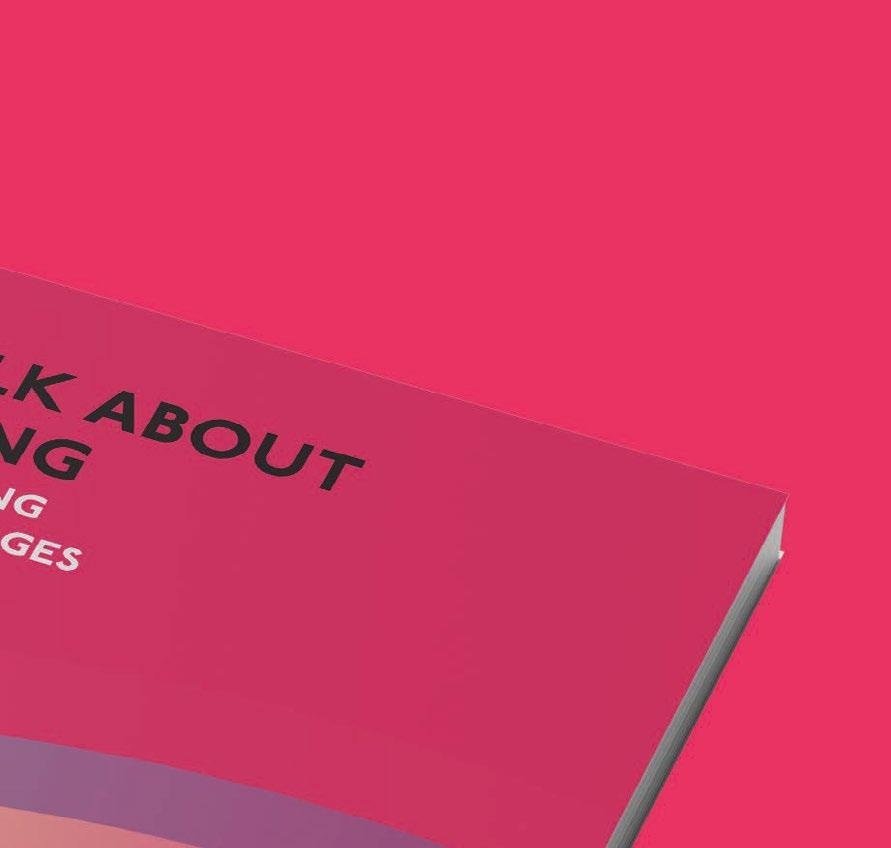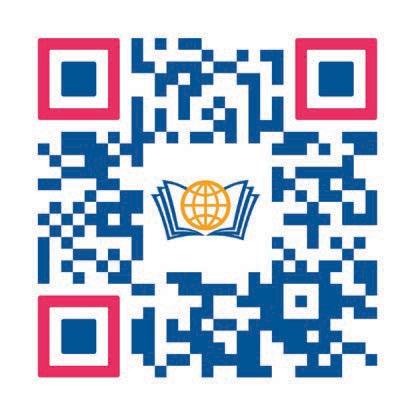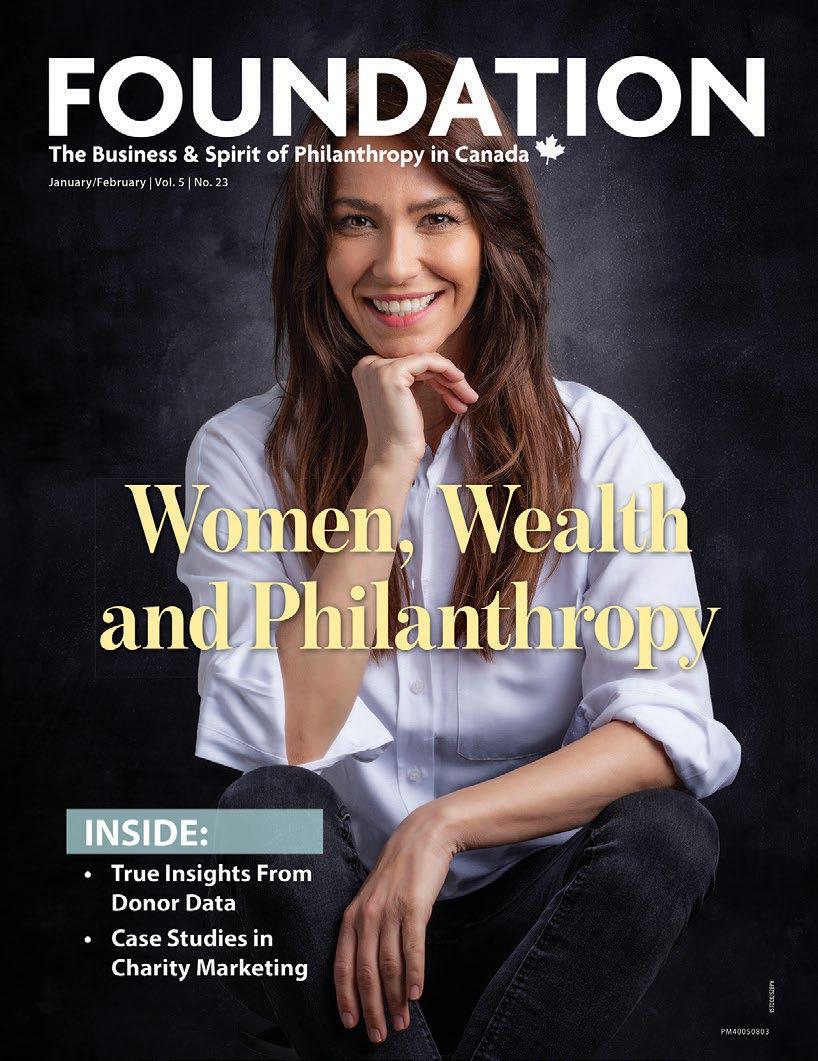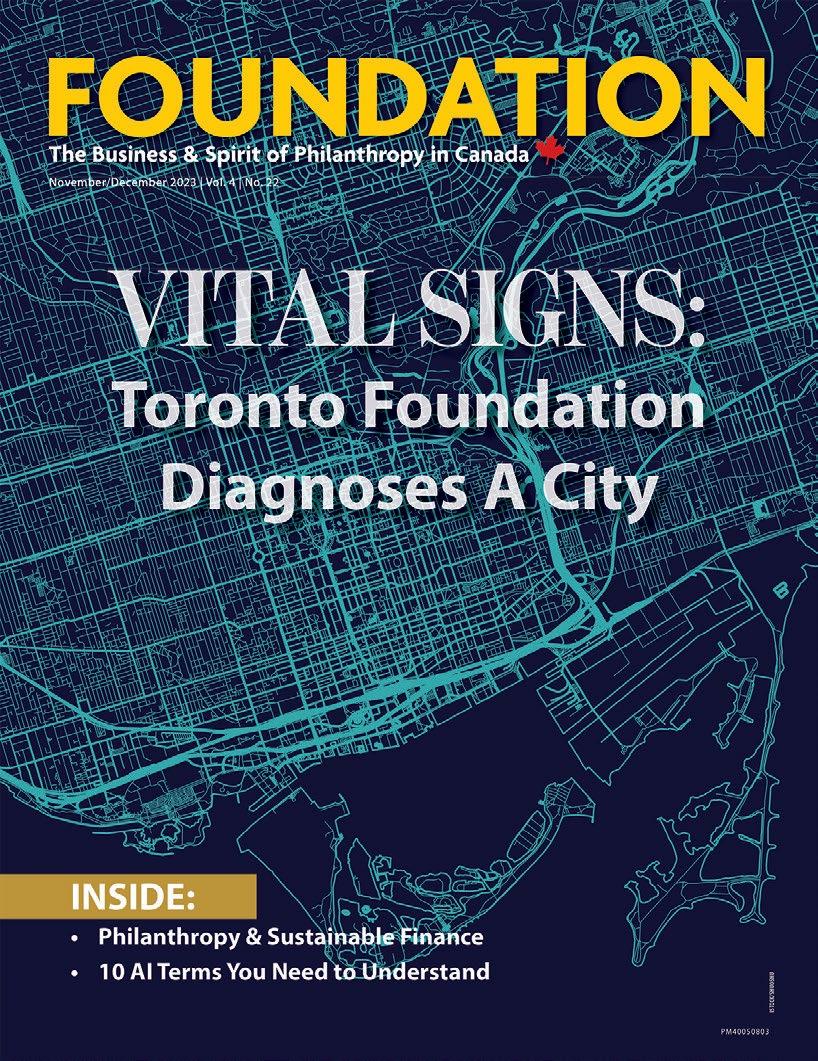








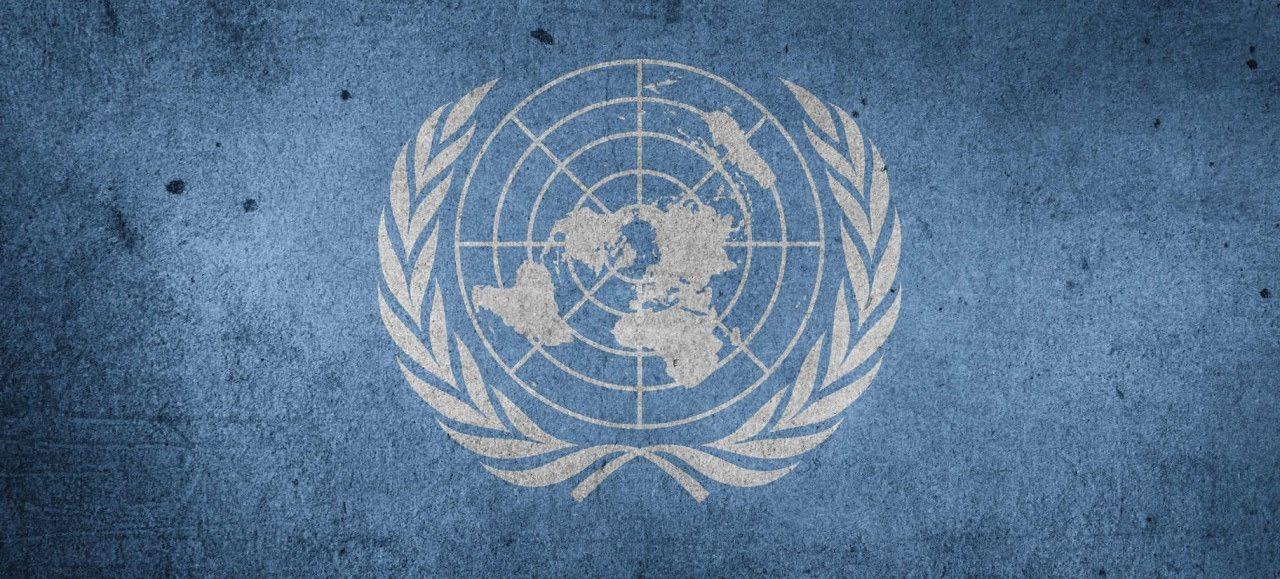
As part of the United Nations 2030 Agenda on Sustainable Development, adopted in September 2015, the UN has recognized the importance of eradicating poverty in all forms. Poverty presents an enormous global challenge for the international community, as is a significant threat to sustainable development. In the spirit of global solidarity, the 2030 Agenda is focused on how best to meet the needs of the world’s poorest and most vulnerable citizens and acknowledges the role that the private sector must play in supporting the various organizations who have undertaken philanthropic efforts to implement the 2030 Agenda.
Poverty exists in every country around the globe, from powerful industrial nations to developing countries. It continues to affect millions of people, regardless of their social and cultural situations, and is a barrier to true prosperity and equality.
Originally a Hungarian civil society initiative to commemorate Mother Teresa’s death, International Day of Charity on September 5 took off worldwide in 2012 when the UN declared it an international holiday. Besides honoring Mother Teresa’s tireless work to help others overcome poverty and suffering, the holiday provides a platform for charitable opportunities to take place. If you can’t make a financial donation on September 5, there are still many ways to get involved, including buying gifts that give back to charities. Overall, this day reminds us that simple acts of charity can alleviate the worst effects of humanitarian crises and create more inclusive and resilient societies.
In recognition of the significant role that charities and individuals have undertaken to alleviate human suffering and humanitarian crises, the UN General Assembly, under resolution A/RES/67/105PDF, has designated the 5th of September as the International Day of Charity. This date was chosen as it is the anniversary of the death of Mother Teresa, and the resolution is, in part, a tribute to her work and dedication to charitable causes.
This 5th of September, the United Nations invites all Member States, international and regional organisations, non-governmental organizations and individuals alike to commemorate the International Day of Charity by encouraging charitable acts in their respective communities to raise public awareness of this event.
May/June 2024 | Vol. 5 | No. 25
www.foundationmag.ca
Twitter: @foundationmaga1
PRESIDENT / EDITOR-IN-CHIEF
Steve Lloyd - steve.lloyd@lloydmedia.ca
DESIGN / PRODUCTION
Jennifer O’Neill - jennifer@dmn.ca
PHOTOGRAPHER
Gary Tannyan
CONTRIBUTING WRITERS
Mary Cahalane
Duke Chang
Tracy Drenth
Serena Hak
Mark Halpern
George Irish
LLOYDMEDIA INC.
Leanne Kaufman
Nicholas Palahnuk
Kathleen A. Provost
Julie Quenneville Good Works
HEAD OFFICE / SUBSCRIPTIONS / PRODUCTION:
302-137 Main Street North
Markham ON L3P 1Y2
Phone: 905.201.6600
Fax: 905.201.6601 Toll-free: 800.668.1838
EDITORIAL CONTACT:
Foundation Magazine is published bimonthly by Lloydmedia Inc. Foundation Magazine may be obtained through paid subscription. Rates:
Canada 1 year (6 issues $48)
2 years (12 issues $70)
U.S. 1 year (6 issues $60) 2 years (12 issues $100)
Foundation Magazine is an independently-produced publication not affiliated in any way with any association or organized group nor with any publication produced either in Canada or the United States. Unsolicited manuscripts are welcome. However unused manuscripts will not be returned unless accompanied by sufficient postage. Occasionally Foundation Magazine provides its subscriber mailing list to other companies whose product or service may be of value to readers. If you do not want to receive information this way simply send your subscriber mailing label with this notice to:
Lloydmedia Inc. 302-137 Main Street North Markham ON L3P 1Y2 Canada.
POSTMASTER:
Please send all address changes and return all undeliverable copies to:
Lloydmedia Inc.
302-137 Main Street North Markham ON L3P 1Y2 Canada
No. 40050803

The iconic Terry Fox Monument, situated in the outskirts of Thunder Bay, Ontario, Canada, was created by sculptor Manfred Pervich commemorating cancer research activist Terry Fox’s Marathon of Hope, one of Canadian philanthropy’s most memorable moments. A vision of hope for our sector’s ongoing work.
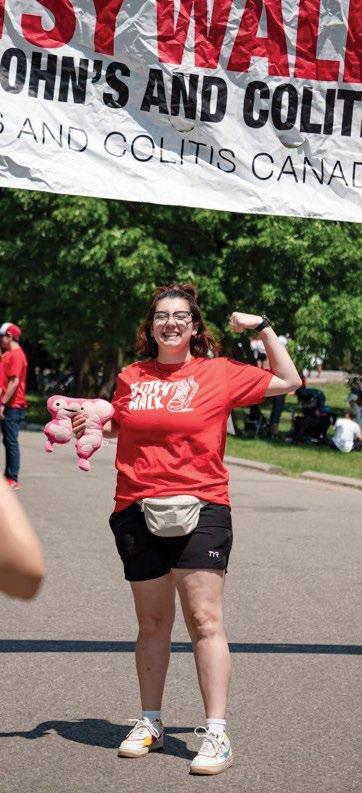




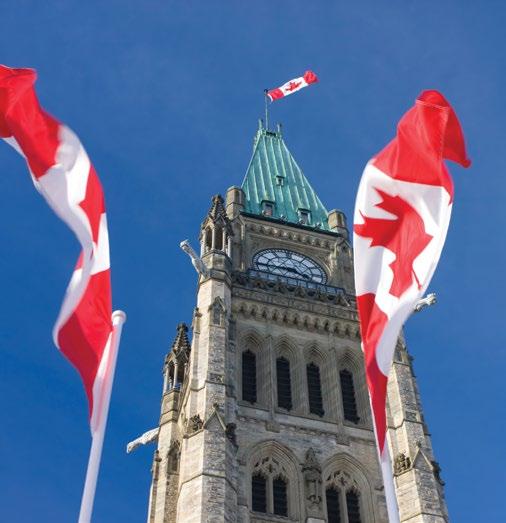

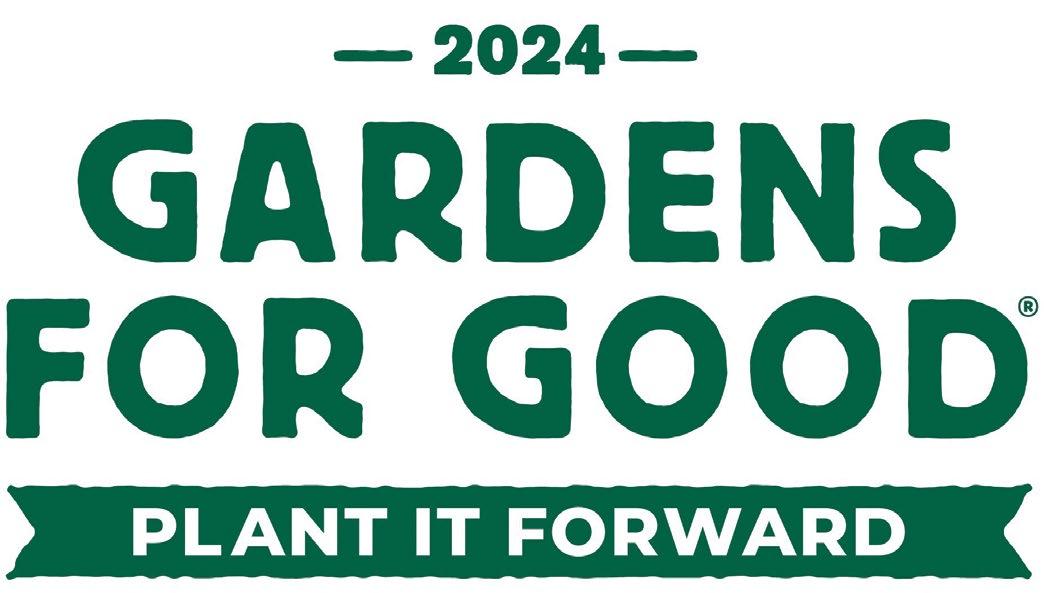
Fifteen organic community gardens across the US and Canada will be awarded $7,500 each. Applications are now being accepted for Nature’s Path Organic Foods (Nature’s Path) annual Gardens for Good: Plant it Forward campaign. Gardens for Good celebrates the meaningful work of organic community gardens across the U.S. and Canada by giving away more than $100,000 a year, supporting 15 community gardens with $7,500 each. The initiative was founded on the belief that collectively, we can create a positive social impact and fight food insecurity by supporting the organic urban gardening initiatives that are on the front lines working to provide more accessibility to fresh organic food in the communities in which they are grown.
“Nature’s Path has always been committed to universal access to organic and healthy food for all, and community gardens do so much in achieving that objective,” says Jyoti Stephens, Nature’s Path VP Mission and Strategy. “Organic community gardens increase food security, provide healthy outdoor spaces for people, provide a forum for sharing knowledge, and build community connections, all while increasing access to fresh, healthy food.”
Since 2010, Gardens for Good has donated more than
$820,000, supporting 105 organic community gardens in both the U.S. and Canada, expediting Nature’s Path’s commitment of donating more than $1 million to organic community gardens by 2028. More than half of the 2023 winners of Gardens for Good are BIPOC-led organizations, and special consideration will once again be given to BIPOC-led gardens and those serving predominantly BIPOC communities.
Ten gardens in the U.S. and five gardens in Canada will be awarded grants. Winners must be a registered nonprofit organization. And for the first time in the program’s history, previous winners are encouraged to apply if they received a Nature’s Path Gardens for Good grant more than five years ago (before 2019).
“We were thrilled to be recipients of the Gardens for Good grant in 2021, helping our farm grow in size and strength,” says Reatha Hardy-Jordan, President and Co-Founder of the Black Urban Farmers Association in French Camp, CA, a nonprofit organization dedicated to honoring the heritage and legacy of African American agriculture. “The funds supported our mission of providing fresh, organic fruits, veggies, and roots with culinary ties to BIPOC food in America, and education to our
community.”
“It has been so wonderful to get to know our Gardens for Good winners over the past 14 years, and to watch their gardens grow!” says Stephens. “It’s incredibly inspirational to see so many organic gardens having a positive impact on their local communities. I can’t wait to celebrate our 2024 winners!”
Eligible organic gardens can learn more about the Gardens for Good program and submit their applications June 24th, 2024.
Nature’s Path Organic Foods is North America’s largest organic breakfast and snack food company and produces USDA and Canadian Certified Organic and Non-GMO Project Verified breakfast and snack foods sold in grocery and natural food stores in over 50 countries around the world.
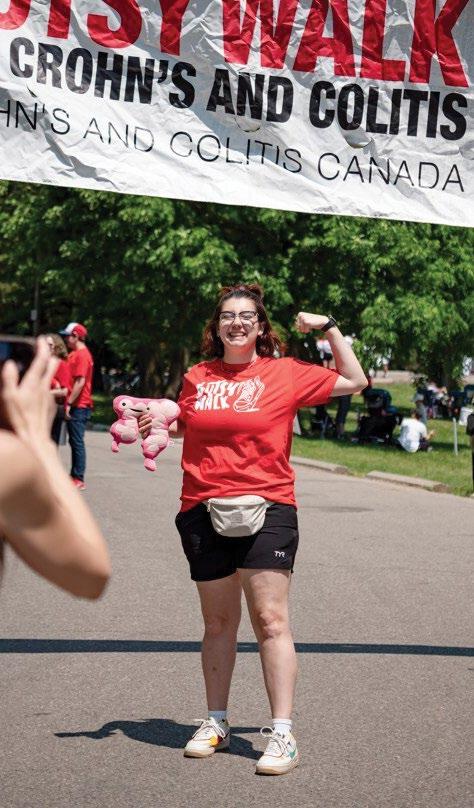
Supporting the 322,000+ people in Canada with Crohn’s or colitis. On June 2, people at 50 locations from coast to coast participated in the 29th annual Gutsy Walk to show the 322,000+ people in Canada living with Crohn’s disease or ulcerative colitis that they are not alone. The list of locations
is available on the Gutsy Walk home page.
In 2024, an estimated 11,000 people are expected to be diagnosed, meaning a new diagnosis every 48 minutes in Canada. That is why it is more urgent than ever to raise funds to support programs and research that offer realistic hope for cures. Further, Canada has among the highest rates of pediatric Crohn’s and colitis in the world, driven by rising numbers among children, particularly those up to the age of six.
Gutsy Walk is the largest fundraiser for Crohn’s and Colitis Canada. The family-friendly event builds on the incredible generosity of so many people which has allowed us to raise more than $52 million since the first Gutsy Walk in 1996. Registered participants typically walk five kilometres, but any distance or activity done on the day qualifies.
Crohn’s and colitis cause the body to attack itself, inflaming the lining of the gastrointestinal tract and disrupting the body’s ability to digest food, absorb nutrition and eliminate waste in a healthy manner. They are lifelong diseases, often called invisible, as many people living with them look ‘normal’ while facing excruciating pain, exhaustion and other conditions.
“Crohn’s and colitis can be lonely diseases, with stigma and isolation added onto the physical symptoms, which are painful and disruptive to daily life. Gutsy Walk is a time to celebrate resilience as we come together to find a cure and improve the lives of those affected by Crohn’s and colitis,” says Lori Radke, President and CEO, Crohn’s and Colitis Canada. “This is also the 50th anniversary of Crohn’s and Colitis Canada, so we’re celebrating the
remarkable impact and progress we’ve achieved – all the while knowing so much more needs to be done.” (The Winnipeg Gutsy Walk took place on June 9.)
The organization considers itself on relentless journey to transform the lives of people affected by Crohn’s disease and ulcerative colitis by delivering impact at all stages of life, in every corner of the country, by finding the cures for these lifelong diseases, and improving the quality of life of everyone affected by these diseases.
The Michener Awards Foundation (MAF) is awarding Chantal Hébert and Terry Mosher its prestigious Michener-Baxter Award for exceptional service to Canadian public service journalism. The MichenerBaxter Award was established in 1983 and is presented at the discretion of the foundation’s board of directors. The award is named for Clive Baxter, who received the first Michener Award in 1971 from then-Governor General Roland Michener.
their extraordinary contributions to our profession.”
Michener-Baxter Award winners are selected by a committee of the MAF board following an open call for nominations.
Chantal Hébert, OC, is a freelance political columnist whose work is featured on radio, television and in print in both French and English. Ms. Hébert is receiving the Michener-Baxter Award for her commitment over the past several decades to explaining English and French Canada to one another – and to themselves. She is widely considered to be among the country’s best analysts of politics in terms of federal-provincial relations and national unity. To this, because of her knowledge, expertise and judgment, she brings an unparalleled voice coupled with a unique blend of moral authority and political realism.
Terry Mosher, OC, got his start drawing caricatures on the streets of Quebec City and has been cartooning since 1967 under the pen name AISLIN.
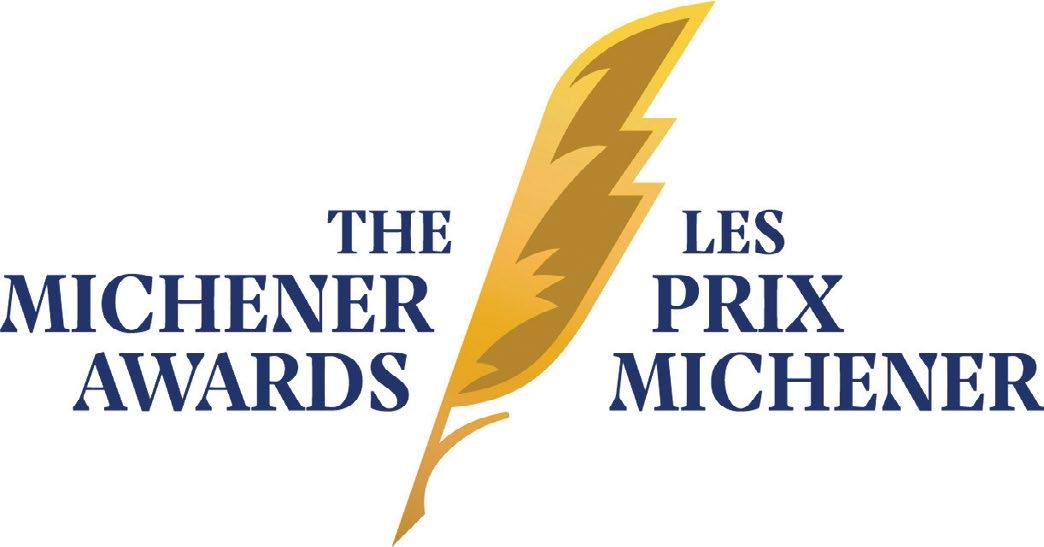
“This year the Michener Awards Foundation is proud to recognize these two great journalists who have spent their careers informing, educating and entertaining Canadians,” said Margo Goodhand, Chair of the MAF. “We are thrilled to recognize Ms. Hébert and Mr. Mosher for
Though he has spent most of his career with the Montreal Gazette, his work has been published around the world. Mr. Mosher is being recognized with a Michener-Baxter Award for his commitment to informing Canadians and lifting their spirits through humour that
is cutting, but never cruel. He is also being recognized for his leadership in reminding Canadians and many around the world of the importance of freedom of speech, through his encouragement of cartoonists in countries where freedom of expression is suppressed, and his generous philanthropy.
Ms. Hébert and Mr. Mosher join a distinguished group of Michener-Baxter recipients. More about this prestigious award, and its past honourees, can be found here: https://www. michenerawards.ca/michenerbaxter-award-nomination/
Both Michener-Baxter recipients will receive their award at an awards ceremony to be held in Ottawa on June 14 at Rideau Hall, hosted by Her Excellency the Right Honourable Mary Simon, Governor General of Canada. The evening gala will also honour the 2024 Michener fellowship recipients and the Michener Award recipient and finalists.
The Michener Awards honour, celebrate, and promote excellence in Canadian public service journalism. Established in 1970 by the late Right Honourable Roland Michener, Governor General of Canada from 1967 to 1974, the Michener Awards are Canada’s premier journalism award. The Michener Awards Foundation’s voluntary Board of Directors administers the award, in partnership with the Rideau Hall Foundation with sponsorship from BMO, Cision, Power Corporation of Canada, and TD.
The Foundation for Black Communities (FFBC) has announced the recipients of its inaugural Black Ideas Grant (B.I.G): Bridge and Build 2023/24 program. This ground-breaking
investment of over $9.1 million will empower 107 Black-led, Black-focused, and Black-serving grassroots, non-profit, and charitable organizations across Canada. The grants will support critical, community-based, solution-oriented initiatives.
The B.I.G. program addresses a significant need for sustained funding within Black community organizations. “This program is a cornerstone of our commitment to empower Black communities with the resources they need to confront historical and ongoing inequities,” said Marlene Jennings, Foundation for Black Communities Co-Chair. “B.I.G. exemplifies community collaboration and embodies FFBC’s unique Participatory Grantmaking Process, where Black community members play the lead role in determining the solutions and projects to support their communities.”
FFBC’s B.I.G. program provides flexible one-year grants, aiming for immediate impact while fostering the development of transformative programs for the future. The grants will bolster the capacity and program delivery of recipient organizations, focusing on combating anti-Black racism, improving social outcomes, and enhancing economic outcomes for Black Canadians.
“Diversity and inclusion make Canada stronger,” added Minister of Diversity, Inclusion and Persons with Disabilities, Kamal Khera .” Today’s announcement builds on transformative investments our government has made to empower Black communities across Canada since endorsing the United Nations International Decade for People of African Descent in 2018. Through the Black-led Philanthropic Endowment Fund, we have created a sustainable
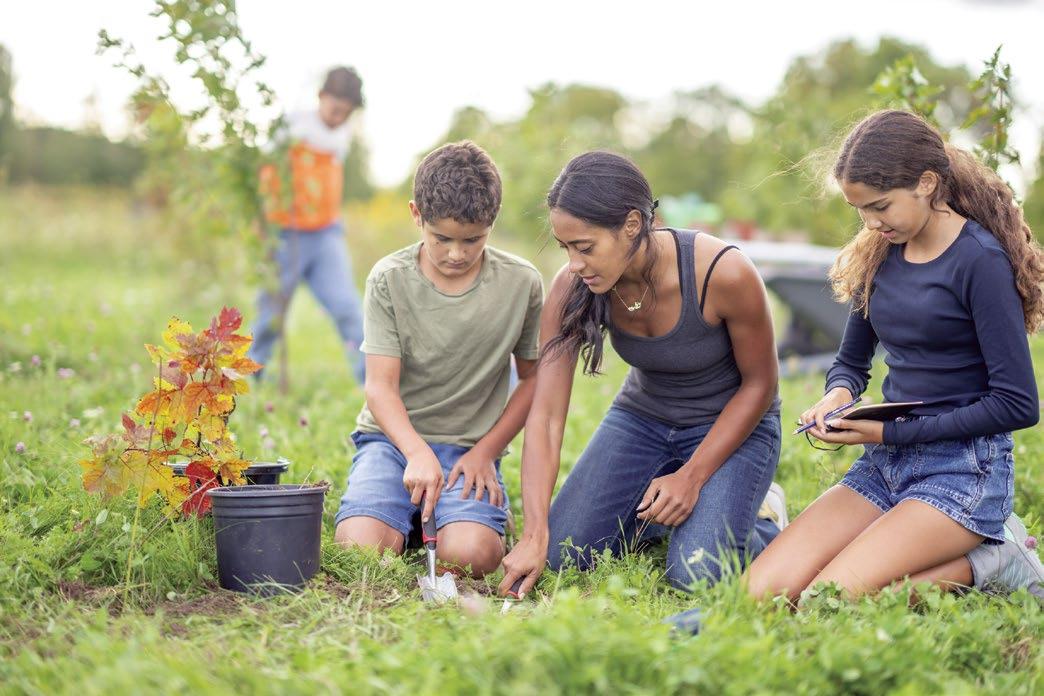
source of funding for Black-led not-for-profit organizations, ensuring that they have the means to address their priorities. The recipients of this first call for proposals will help in our fight against anti-Black racism and in improving the social and economic outcomes of Black communities across the country.”
FFBC was established in response to the call for a new paradigm in philanthropy for Black communities. As the steward of the historic $200 million Black-led Philanthropic Endowment Fund, funded by the Government of Canada, FFBC is a first-of-its kind institution dedicated to ensuring that Black-led, Black-serving, and Black-focused (B3) organizations have the vital resources needed to create lasting change.
The Foundation congratulates this year’s recipients of the Black Ideas Grant and looks forward to the profound impact they will continue to make across Canada.
To learn more about the Foundation for Black Communities or to join us in our mission, visit www. forblackcommunities.org
The Foundation for Black Communities (FFBC) was established to ensure every Black person can thrive and Black communities have agency in defining their own future.
Founded in 2020, FFBC is Canada’s first-ever philanthropic foundation dedicated to ensuring Black-led, Black-serving, and Black-focused organizations have the sustained resources needed to make a meaningful impact.
New initiative speaks to the growing passion of cricket in Canada and the urgent need to Conquer Cancer.
The Princess Margaret Cancer Foundation unveiled The Princess Margaret’s Cricket to Conquer Cancer, North America’s premier street cricket fundraiser.
This groundbreaking initiative is slated to be the largest of its
kind in the country. Funds raised from this event will support The Princess Margaret, one of the top five cancer centres in the world. By combining a global passion for street cricket with a desire to live in a world free from the fear of cancer, this inaugural event promises to not only generate critical funds for cancer research but also foster a sense of community.
“Cricket is becoming one of Canada’s most popular sports,” said Steve Merker, Vice President of Corporate and Community Partnerships at The Princess Margaret Cancer Foundation.
“This inaugural event, a first of its kind in North America, aims to raise substantial funds for the Cancer Center while inspiring thousands of new supporters to take on our vision to Conquer Cancer in our Lifetime.”
The inaugural Cricket to Conquer Cancer event will be hosted on May 31st, 2025 in Mississauga. Dozens of co-ed teams made up of rookies, ringers, celebrities and players of all ages and skill levels will step up to bat in this dawn-to dusk cricket tournament.
National and International cricket stars will play alongside and against participants and are delighted to support this new initiative.
“I am thrilled to witness cricket’s growing popularity in Canada — a testament to its welcoming and multicultural community. It truly is a global sport,” said Carlos Brathwaite, world-renowned cricket player, 2023 Global T20 Canada champion, and former captain of the West Indies National team. “We all have a personal connection to cancer, me included. One thing that kept my mum going through her cancer treatment was her constant smile and positive outlook. I look forward to making this event a celebration for survivors and an inspiration for all those during their journey.”
Cancer is the leading cause of death in Canada and the second leading cause of death around the world. Funds raised from this event will accelerate cancer research, education and clinical care happening at The Princess Margaret.
“The effects from this

fundraiser will know no bounds,” said Dr. Amit Oza, Head of the Division of Medical Oncology & Hematology at Princess Margaret Cancer Centre. “Funds raised by our passionate community of participants help lead to the breakthroughs that will help patients here in Canada and around the world. As a cricket enthusiast myself, I am delighted we can celebrate this amazing sport while creating a global impact on cancer research.”
The Princess Margaret Cancer Foundation is Canada’s largest and leading cancer charity, dedicated to raising funds for Princess Margaret Cancer Centre, one of the world’s top five cancer research centres known for its game-changing scientific achievements and exceptional patient treatment and care. Through philanthropy, events, our world-leading home lottery program, and commercialization initiatives, we make possible the critical funding required to accelerate cancer research, education, and clinical care — benefitting patients at Princess Margaret Cancer Centre, throughout Canada and the world. www.thepmcf.ca
The CST Foundation (CST) released new research that aims to better understand the challenges and opportunities in rural uptake of the Federal Canada Learning Bond (CLB) program. Created in 2004, the CLB was designed to kick-start education savings for young Canadians from low-income households; to receive the CLB the eligible children must open a Registered Education Savings Plan (“RESP”). While the gap in take-up of the CLB between rural and urban Canadians has grown since 2004, the reasons for this gap have never been
explored. CST partnered with researcher S. Ashleigh Weeden, PhD, to survey rural Canadians to better understand the unique challenges they face in saving for post-secondary education.
The survey was open to adult parents and guardians that selfidentified as low-income and living rurally. Some key findings from the survey include:
Rurality matters: policies and programs such as the CLB do not meaningfully account for the lived experience and realities of rural living. The lack of local post-secondary education opportunities, limited financial services infrastructure, and less access to information on programs such as the CLB make it harder for families to financially prepare to support their children’s post-secondary education.
Administrative burdens become a barrier. The challenges of living rurally were mostly reported as being lack of services and amenities, lack of infrastructure, and lack of access to critical services. These challenges accessing services in rural regions can turn administrative burdens — such as getting a Social Insurance Number for their child — into a barrier impacting rural families access to programs like the CLB.
CLB awareness remains an issue. More than 50 per cent of survey respondents had heard of the CLB but had not applied for the program, while 37 per cent knew about the program and had applied. The most common source of information about the CLB was a friend, family member or community organization, suggesting there remains opportunities to better leverage community-level service providers and networks.
“This research underscores CST’s continued commitment
to enabling access to postsecondary education for Canadians regardless of where they live,” said Peter Lewis, President and CEO, CST Foundation. “As the pioneers of education savings in Canada, we are committed to being part of the solution to help close the gap in CLB take-up among rural families.”
“Governments across Canada, at all levels, continue to struggle to develop and implement effective rural policies and programming,” said Dr. Weeden. “This investigation into the persistent and growing gap in rural uptake of the Canada Learning Bond reinforces the critical importance of tailoring public policy and investments in a way that respects and reflects
the place-based realities of different communities across the country so that a person’s postal code does not determine their quality of life.”
Founded in 1960, the Canadian Scholarship Trust Foundation is dedicated to helping Canadian families access post-secondary education. Through philanthropy, discovery, advocacy and by sponsoring the Canadian Scholarship Trust Plans to help families save for post-secondary education, CST continues to deliver on its mission. The Foundation rewards hard working and community minded Canadian students through scholarships, bursaries and awards programs. CST has helped over 800,000 students achieve their post-secondary dreams.

It’s not uncommon in our industry to hear parents express concern about talking openly with their children about wealth — including how much of it the family has. One gentle way we often see them ease into the conversation is through charitable giving and philanthropy.
Parents will introduce children to concepts of investing, gifting, stewardship and governance by including them in family decisions tied to charitable intentions. This can be on a small scale, such as involving them in decisions about which charities may benefit from a family’s annual giving each year, or a larger scale, offering adult children the responsibility for part of an investment portfolio to be used philanthropically, or involvement in a family foundation.
Engaging in this way can highlight the similarities and differences between generations with respect to how they think, act and feel about wealth and philanthropy. The act of giving is often a statement of one’s values. But as we all know, what’s important to you or me can be vastly different from those around us, including our closest family members. In many cases, those differences are tied to generational influences.
With a huge wealth transfer on the horizon in Canada, understanding the next generation of investors and philanthropists will be key for many of us — whether we’re in the charitable sector or estate-planning and wealth-management fields. We can all expect to see a refocusing in priorities and perspectives as the shift from one generation to the next gains momentum.
The great wealth transfer to the next generation
Right now, baby boomers are the decision-makers for an enormous amount of wealth. The first baby boomers turned 65 in 2011, and by 2016, seniors outnumbered children for the first time in the country’s history. At the end of their working careers or already retired, baby boomers today are at a point in life when legacy concerns are top-of-mind.
While charitable intentions are deeply personal and unique to the individuals, donors’ key causes often reflect the concerns of their lives, which can be heavily influenced by their experiences. Baby boomers form a generation that was affected by several wars and lived through the civil rights struggles of the 1960s and 1970s, so it is common to see members of this generation value social justice, world peace, and the environment. With many now in their late 70s, we also see healthcare causes as a core focus when it comes to strategic-giving planning.
People in generation X were born between 1965 and 1980, an era that saw a massive spike in globalization, increased environmental concerns and significant cuts to social services. Very likely, trends towards responsible and ESG investing and climate action will continue to be prioritized.
Millennials, who now range in age from about 28 to 43, currently tend to favour health and medical non-profits, as well as human rights and international affairs organizations. They’re also comfortable donating through online platforms and like to set recurring donations.
The preferences above are by no means comprehensive,
Establishing and maintaining open dialogue can help ensure families are aligned when it comes to values and intentions.

and of course many causes such as healthcare, education and religion span all generations.
Charitable causes are not the only wealth-related area where different generations may have differing ideas. Even within a generation, competing priorities can create family rifts when money is involved — particularly when trying to ease a transition from one generation to the next.
On the whole, younger generations value transparency and engagement, so helping families have difficult wealthtransfer conversations is extremely important. It’s these conversations that can help eliminate assumptions, provide clarity and alignment on values, and offer different perspectives and an appreciation of where and how one wants to give back.
One challenge we see often with individuals who are preparing to transfer wealth is determining what information and details to share with heirs. A report conducted by RBC Wealth Management a couple of years ago found that only 33 percent of those who had received an inheritance were made aware before
receiving any assets. And even when some discussions do take place, they often tend to be limited or high-level in nature.
While there can be disadvantages to sharing wealth-transfer information, such as the risk of creating a sense of entitlement, there are many benefits, including:
❯ Giving heirs the ability to proactively and accurately plan ahead for the wealth they are intended to receive;
❯ Eliminating any element of surprise or shock; and
❯ Providing an opportunity for the giver to help heirs prepare in advance.
Establishing and maintaining open dialogue can help ensure families are aligned when it comes to values and intentions. Open conversations can provide heirs and family members with a forum to share views, concerns or interests. And for individuals who will be passing down wealth, it’s an opportunity to share reasons and context for their decisions, but also to gain valuable insight from family members. It can also ease possible friction points between family members later by creating clarity and transparency while individuals are
still around to explain it.
Reaching next generation donors
For many in the boomer generation, money and death remain taboo topics, so it’s important to establish a safe environment to discuss wills, estate planning and philanthropic giving. The key is to encourage an open discussion backed with financial education to help families and their heirs understand how their values align. Wealth transfer done well fosters harmony during the inheritance process, while ensuring that legacy wishes and values are carried out for generations to come. Sharing a vision of how those values come to life through philanthropic planning and giving will serve to further enrich that multigenerational legacy.
LEANNE KAUFMAN is the President and CEO of the Royal Trust Corporation of Canada and The Royal Trust Company. She is responsible for the strategy and overall management of RBC Royal Trust, which provides wealth protection and transfer solutions across generations to high net wealth Canadian families. A lawyer by profession, Leanne is the author of the fourth edition of The Executor’s Handbook, a contributor to various publications on the topic of estates and trusts and the host of RBC Wealth Management’s Matters Beyond Wealth podcast. For more information, visit: https://rbc.com/royaltrust. She writes this column exclusively for each issue of Foundation Magazine

As a professional fundraiser I worry about “civility” in our work, and in our society. I use the word “civility” because fundraisers in particular build relationships, and in this context, “civility” would refer to polite remarks or courtesy in formal conversations. But that is assuming we are having “civilized conversations”. Nonetheless, I fear that: “what was, will never be again” because, this “formal politeness” has regressed, and these civil conversations are not happening anymore.
Fostering a culture of civility is not just a matter of politeness — it’s a social imperative. In our sector, philanthropy means building relationships, and I believe there is a correlation between civility and the social interaction we hold to create positive outcomes. I have found that the root of “civicism”, meaning the virtues and sentiments of a good citizen, a civic interest to a cause, originated as a devotion to the cause of the French revolution of 1789.
Fast forward to 2024, I am trying to grabble with what is “civicism” in today society? What are our civic interests, and how specific trends our society is experiencing deeply affects the way we socially interact. CanadaHelps just released its 7th edition of The Giving Report, examining the charitable sector and the state of giving. Though not surprisingly they illustrate downward donations and volunteerism trends; what is most troubling for me are the social behaviours we are observing.
The Giving Report, claims the number of Canadians with six or more close friends has declined from 37 percent to 22 percent between 2013 and 2023. These changing social trends of how we interact and build relationships are here to stay. The report states that giving participation has dropped as a result of Canadians becoming increasingly disconnected. Now that is what worries me more.
The decline of “generosity” needs attention, but most importantly, it is imperative to reverse the dwindling spirit of communal support. To better understand this social phenomenon, I propose we look at two key influencers of this social change namely: media and technology. Redefining how we interact with each other, ultimately, how we interact socially, has an enormous impact on how people give, and therefore how we fundraise.
We are experiencing a level of disconnect that is making it harder for individuals and communities to see how they can make a difference and have an impact in areas that matter to them. This is at the core of our interactions; this impacts the consideration we have for one another — our perceived sense of “civicism”.
Community Foundations of Canada’s 2023 Vital Report also reiterates that the number of Canadians with six or more close friends has declined. More than 80 percent of those with many close friends donate, while just over 50 percent of those with very few close friends donate. The Vital Report states that donors with many close friends were more likely to volunteer and participate in community events. There is a correlation with how socially engaged individuals are and their giving and volunteering habits.
It should be noted that in 2023 Statistic Canada claimed that close to half (46 percent) of non-profit organizations reported increased demand for services or products, whilst only 24 percent of these organizations reported an overall capacity to meet these increasing demands. According to Daniele Zanotti, United Way Greater Toronto, this social disconnect is also experienced in volunteerism which is following the downward trend of donations. In the GTA area, approximately 25 percent of individuals volunteer now, compared to 40 percent four years ago. Kim Winchell, United Way BC, says that of the 500 organizations they support, all are experiencing challenges with volunteer recruitment. And in rural areas, Andrea MacDonald, United Way PEI, states: “We’re at a tipping point here,” the same individuals volunteer in multiple places.
People are spending more time alone and this was accelerated further during the pandemic as internet and smartphones became increasingly widespread and the pandemic forced us all indoors. People have replaced time with friends with more time spent at home alone. As we experience an increasing social disconnect, it is then critical to look at how our face-to-face social networks have shrunk and see if we can reverse this trend.
Last year, The Philanthropist Journal, published Yvonne Rodney’s opinion on the state of volunteerism entitled, “Volunteerism:
In crisis or at a crossroads?” Rodney talked about the challenges of building a sense of belonging and connection in the hybrid era. Our societal infrastructure has come to depend on volunteer work and engagement to support the needs of our communities, to support essential activities that allow non-profits and charities to do what they do.
Technology has embedded itself in our everyday life and how we spend our time has been influenced by social pressures beyond our control which has created a significant mindset shift in our engagement habits. We must ask: has technology contributed to creating a “new community”? If volunteering is associated with “community belonging”, then how can we find our place in our community and feel the responsibility of taking care of each other?
We need to create a society rich with civic pride, where each act of giving strengthens the social fabric that binds us together. Whilst at the same time, remembering the role technology plays today. Whether we value or include technology, the result is that we cannot ignore the influence of technology because we are all, beneficiaries, donors, volunteers, and staff members, using technology. Hence, if technology is influencing the context of our communities and shifting our behaviours, we need to use technology as a tool that can build relationships.
Katie Gibson, responsible for digital innovation, and Marc-André Delorme, planning and development advisor for DATaide program, wrote “The case for integrating tech considerations into strategic planning”. They claim that very few Canadian non-profits incorporate technology considerations into their strategic planning processes. A missed opportunity, according to Gibson and Delorme.
Though technology is mainly seen as tactical, not strategic, by most non-profits, it has become essential to learn how to use digital strategies to support our ambitions and increase our organizational impact. Canadian non-profit organizations that have prioritized digital marketing in their
We need to create a society rich with civic pride, where each act of giving strengthens the social fabric.
strategic plans speak of many benefits to their staff and communities. Yet, a recent survey conducted on civil society organizations, by TechSoup claims only 22 percent have “defined a strategy and timeline for achieving digital readiness.”
And when CanadaHelps surveyed 1,470 organizations about their digital skills, 31 percent stated that “Digital is not incorporated into our strategic plan”, while 46 percent identified digital as not “a big enough priority compared to other activities”.
Meida influence
Very intertwine with how we use technology, is our seeming “relationship” with the media. In his April 2024 article,
Aiden Cyr, member of the Manitoba Métis Federation who has his ancestral roots in the Métis homeland along the Red River, and international advocate on Indigenous reconciliation, gender-based violence, and climate change, warns us about the hyper-individuality among young workers. He defines hyper-individuality as an outcome of our exposure to media. It is the overemphasis of self-interested competition and meritocracy that connects educational and professional achievement, status, and wealth with innate personal value. Essentially, we have created a culture of perfectionism which has created more unrealistic
expectations, and more anxiety.
The consequences of generations being raised to internalize hyper-individualist and perfectionist values have begun showing themselves through increases in mental health difficulties, leading to “hostility, tendency to blame others, and lower altruism and trust.” According to Cyr, many feel unable or reluctant to engage emotionally. Studies have found significant connections between perfectionism and increased sensitivity to criticism and failure, creating unrealistic expectations or entitlement.
Then, I must ask: Can we restore this culture of belonging by re-inventing this social need for inclusion and belonging? Charities and non-profits must communicate a strong social purpose which is essential for fundraising and program delivery. But it is imperative to authentically communicate to create a thriving environment and restore “caring for one another”. We must reverse the trend of fewer people participating in social service clubs as well as more people lessening their close ties to their families and friends.
If civility means a “polite or courteous action”, then rekindling the communal bonds that foster a thriving, charitable society is essential for these actions to take place. When we have consideration for one another, we do not “lash out” on social media, or openly criticize marginalized individuals. We must invest in, and cultivate, a society that values deep connections and active participation. While it is true that in 2023 individual donations remain the main source of funding for registered charities (41 percent Statistics Canada), we must look beyond the charitable “activity” and better understand what influences the “human” behaviour behind incentivize giving. Because the strategies and tactics that have gotten us to this point will not get us anywhere different.
Last March, Hilary Pearson reviewed, The Price of Humanity: How Philanthropy
 BY MARY CAHALANE
BY MARY CAHALANE
It’s usually an inside job.
There you are, minding your own business. Getting the job done.
You know the work inside and out. Sure, there are days… and nights, when all you want is a stiff drink and a chance to relax.
But there are needs to be met. People to be fed. Or housed. Furry little animals to be adopted. You know the score.
So there you are, late into the afternoon, writing. You’ve had your notes. Fought some off. So it looks like you just might get this one done tonight. You sure hope so.
That’s when you hear the knock on the door. And you know your hopes are shot.
“You know, you haven’t captured our work quite right,” she says. “That’s not the important part of what we do. Let me explain…”
You try to hide the sigh. It escapes anyway.
She means well. Has a heart bigger than this city. But what she doesn’t know is fundraising.
And that’s the danger here. You’ve seen it before — good fundraising appeals, killed before they can work.
It’s programsplaining. And it’s brutal.
She’s left you no choice. So you slowly reach over to your desk drawer and open it. Your weapon isn’t new and shiny. But it’s trustworthy. And you know you’ll need it now.
You have to stop this crime before it goes too far. So you hand her this note, hoping to contain a fundraising catastrophe before it starts.
Dear Esteemed Colleague,
What you are suggesting is dangerous. Worse, it doesn’t work. So before you continue, please read this:
You know too much. All there is to know about what our organization does. You do it every day. I admire you. But I know what our donors need to know. I’ll keep it simple. Donors are less concerned about how you do your work.
You’re very good at what you do. You work long hours for less than private sector colleagues make. And you innovate! (Small budgets can push you to that.)
But your great new process isn’t nearly as interesting to donors as what you accomplish.
Here’s the thing: Donors don’t ask for much. What’s the problem, and how can I fix it? Sounds simple, right? It is.
Fundraising communication is for donors, not insiders. Most importantly, fundraising is for donors, not you. Sure, your work should be celebrated. I’ll come to the party.
But this fundraising appeal? The next newsletter? Not the place. Not the audience.
Here’s the bottom line: Your work? It needs money.
And that’s where I come in. You need the gifts our donors will send. So you need fundraisers to talk to our donors in the way they want to listen.
So let fundraisers do their work. We’ll all be better off.
I walked away, hoping my message got through.
Now, let’s take a look at something we all deal with.
How to write a thank you letter when you’re feeling stuck.
Stuck?
You’ve been working hard on that last campaign. And now, you have new gifts! After the celebration, you begin to wonder. How can you write a thank you that works? Where do you start?
Here’s my quick thank you letter how-to.
First, a confession: I used to write rote, boring, perfunctory thank you letters. And I didn’t much like writing them. Plus, with an appeal, you feel like you have a goal. Thanks are an afterthought, right?
Wrong. So. Wrong.
Then I read posts by my friends Pamela Grow and Lisa Sargent. My eyes were opened. Saying thank you well matters. Unless you don’t care if donors stick around. So here is my advice for your great thank you letter.
Personalize the salutation: Nothing says, “We love you for your money” like a “Dear Friend” thank you letter. Don’t do it.
First paragraph: One great line: Just like your appeal letter, the first line of your thank you does some heavy lifting. Make it sing.
“On behalf of…” is coma-inducing. Don’t do that either.
Instead, imagine your favorite person in the world.
Imagine they’ve just given you the greatest gift — the thing you’d never dare ask for. Hang on to that feeling of love and gratitude. That’s what needs to fill this line. Make it short. And make it all about the donor, not your organization.
Stuck? Try “You’re amazing!” or “You’re my hero!”
Flatter away. Gush. Trust me, no one hates being told they’re wonderful.
Second paragraph: Look at what you’ve done! Tell your donor exactly what their generosity accomplishes.
Hint: this is never “meeting our annual fund goals”. Connect their generosity to the beneficiary. Because of your generous gift, a family will have a real Thanksgiving dinner this year.
Make the connection without inserting your organization. Nothing in this letter is about how great you are.
Third paragraph: Stay connected. Use this to suggest ways they can learn more, call for a tour, or reach you or another real person via phone or email. (And do I have to say that they’d better be able to reach that person?)
Fourth paragraph: Say it again. Restate your gratitude. Tell them again why they’re important.
Have a human sign the thank you letter. Make it someone as high up in the organization as possible. Or sometimes, the person the donor has a connection to.
Sign it for real. Add a note — even if the note is only “Thank you very much!”.
Don’t make the IRS the star of the thank you letter. Stick that boring but necessary language at the bottom of the letter. No one wants to read it — they just want it there.
CONTINUED FROM page 13
Went Wrong and How to Fix It, by Amy Schiller. Referencing, Schiller, Person pointed to the unique role humanity has in helping humans live full human lives. According to Schiller, who is an American scholar with a background in fundraising, “Philanthropy must be dedicated to human flourishing by focusing more on beauty”. In her book, Schiller points to philanthropy as serving the benefactor as much as the recipient, she called it a “demonstration of civic virtue and patronage”. “Philanthropy must be the financial mechanism for supporting the creativity, imagination and plurality of collective human life.” It is not to address our growing economic social inequality, the onus for changing this is on governments and political leaders. Following this reasoning, philanthropy is to make the earth more of a home and to encourage inhabitants of the spaces and institutions it provides, to feel at home in the world. The world should serve all of us, not the few who can exploit the many for maximum profit. This may be possible if we make space for innovation and allow opportunities that can change our behaviours with an intent to enable a renewed sense of community.
My final thoughts
She writes this column exclusively for each issue of Foundation Magazine.
In “ 25 Years of Decline: Assessing The State Of Charitable Giving In Canada And Charting A Path Forward ”, Steven Ayer, argued, that the last time we had an increase in the donation rate was in 2010. Over the last 25 years, we have seen declining donation rates and this trend of declining charitable donations intensified during the pandemic. Time has become a luxury which forces us to chose where to invest our time. If we all agree the “clock” will not turn back and given the symbiosis we have with technology and media, we must alt this
persistent decline, now!
Not only because there are correlations between people with many close friends and people who donate. But specifically, because there are less individuals with friends (30 percent less according to CanadaHelp). As Schiller says, “Ours is a world for humans”. Any individual can make a philanthropic contribution to the common good. And any individual should feel and have the capacity to do so. But are individuals motivated to do so?
Given our beneficiaries and donors are immerse in technology and media, we must re-define our connectivity. I believe that by building new relations between individuals and members of a community we can stop this continued path to gradual disconnection from the communal ties that enrich our lives. We need to write a new definition of civility, today. It will not be easy. But recently I read something very inspiring from a very generous man, Paul Nazareth. In making bold decision and looking forward he said: “so, I’m walking onward. I’m afraid, but I know I’m not alone.” If something is going to change, we have much work to do.
It is together, that we can support people to thrive and to be engage deeply with their local communities. It is together that we will create a renewed sense of civility.
KATHLEEN A. PROVOST is currently the Vice President, Philanthropy and Communications at United for Literacy (previously Frontier College), a national organization with 125 years of community partnerships in Canada, offering free tutoring and mentoring to adult, youth, and children who need literacy and numeracy support. Kathleen has over 30 years of experience in the charitable sector. She has been a Certified Fundraising Executive (CFRE) since 2007 and a long-time member and volunteer for the Association of Fundraising Professionals (AFP). Kathleen holds a Masters degree in Adult Education from St. Francis Xavier University as well as a Baccalaureate Arts in Political Science and a certificate in Public Relations from McGill University. As a recognized leader, Kathleen has tailored presentations for French and English audiences at various events including AFP-Nova Scotia, AFP-Ottawa, AFP-National Congress, Coady Institute and the Canadian Council for the Advancement of Education. She has received numerous recognitions during her career, including the Queen Elizabeth II Diamond Jubilee Medal for her contributions to the charitable sector and was recognized as 2021 Fundraiser of the Year in Nova Scotia. She writes this column exclusively for each issue of Foundation Magazine.

No one likes bad news, whether it comes in the form of a stock market correction, a rise in inflation or a drop in interest rates that cuts cash flow for retirees living on a fixed income. But the bad news that often gets the most passionate negative reaction is an increase in taxes — so it isn’t surprising that many Canadians have been talking about the increase in the capital gains inclusion rate announced in the 2024 federal budget.
The budget proposes that starting on June 25, 2024, individuals will pay tax on 50 percent of the year’s realized capital gains up to $250,000 — and 66.67 percent of the year’s realized capital gains above $250,000. Corporations and trusts must use the 66.67 percent inclusion rate from the first dollar now of any capital gains realized during the year.
Anyone who owns an asset with a large unrealized capital gain — such as a substantial investment portfolio or real estate beyond a personal residence — will be affected. How much will the new inclusion rate cost taxpayers? Let’s say that, during the second half of 2024, someone realizes $250,000 in capital gains from investments and sells a cottage that has appreciated in value from $200,000 to $1.2 million, resulting in a $1 million capital gain. At the highest combined federal-provincial marginal tax rate in Ontario (53.53 percent), tax on that $1 million capital gain would be $267,650 with a 50 percent inclusion rate, but $356,885 with a 66.67 percent inclusion rate. That’s a difference of $89,235 — hardly small change. And of course it’s much worse for corporate holdings.
I always like to look for the silver lining. In this case, because these budget changes have captured our attention, many people are more motivated than ever to learn how to minimize taxes on capital gains. As a result, we’ve been sharing a range of strategies with our clients and professional colleagues, including ideas that transform tax into legacy-building philanthropy that benefit both foundations and the charitable causes they support.
1Averaging down each year’s capital gains tax
There’s a simple way to take advantage of the fact that the first $250,000 in capital gains earned by an individual will continue to benefit from the 50 percent inclusion rate. Between June 25 and December 31, 2024, and every year thereafter, an individual can plan to realize $250,000 in capital gains — essentially harvesting the amount that can be taxed at a lower rate. Also, consider selling depreciated stocks, bonds, mutual funds, or EFTs for capital losses to offset against any capital gains now or in the future. This strategy is known as tax-loss selling. Be aware that there’s a 30-day period during which an investor cannot repurchase the same security after selling it. Fortunately, there’s no such rule when someone realizes capital gains — which means that after locking in a new adjusted cost base, the investor can immediately repurchase the same security.
Remember that capital losses can be used to offset against capital gains in perpetuity in the future so if you are expecting a big payout in the future, stockpiling some losses now can be of help.
2
Mitigating capital gains tax with an estate freeze
An estate freeze restructures the ownership of a corporation to minimize capital gains tax when assets transfer to the next generation. The current owner holds onto preferred shares that maintain a fixed price and therefore will incur capital gains tax on a predictable amount through a deemed disposition on death. At the same time, the corporation creates common shares for beneficiaries. The common shares appreciate in value but can be held beyond the current owner’s death without a deemed disposition in the hands of his beneficiaries. The result is the deferral of capital gains tax on that growth, and it’s likely going to be sizable.
Now, with the freeze put into place, we need to determine how to create the money that will eventually fund the tax bill or convert the tax into charity.
We emphasize to all clients how important it is to make strategic decisions about how to cover the eventual capital gains tax liability on death. In most cases, the choices are to pay the tax with cash set aside for that purpose, with a nontax-deductible loan at an uncertain future interest rate, with selling assets at what may not be the optimal time or price, or with an adequate amount of life insurance.
For couples, joint-last-to-die (JLTD) life insurance is usually the most costeffective choice, because it pays out when the second spouse dies (which is when the tax liability occurs) and is easier to acquire as it’s usually based on the younger, healthier spouse’s actuarial projections. JLTD life insurance is a perfect option for estate freezes, can cost 40 percent less than insuring a single life and can work where one spouse may be uninsurable.
Life insurance premiums can be paid using cash flow, by moving taxable assets into a tax-exempt life insurance policy or implementing a financing arrangement (aka IFA - Immediate Financing Arrangement). An IFA can be particularly appealing because when set up properly, it can be cash flow neutral. First, the client uses assets to go towards the first life insurance premium. Then the borrow back the same amount from a financial institution, using the policy’s cash surrender value. The borrowed money goes back into their investments, which makes the interest tax-deductible, in addition to some other deductions available.
Canadian financial institutions love lending against life insurance policies with the cash surrender value as collateral. In fact, they tend to place a higher value on the security of an insurance policy than any other asset, including land, buildings, stocks, bonds, crypto or even precious metals such as gold. As a result, it’s easy to
get approved for a loan up to 100 percent of the cash surrender value, and the interest rate is generally very favourable.
Reducing capital gains tax with charitable donations
Charitable donations are another powerful way to mitigate capital gains taxes. One approach is to donate either publicly traded securities or (this is less well known) private company shares following an estate freeze. There’s no capital gains tax due on assets like these that are donated in- kind, and the donor receives a charitable receipt for the full market value.
It’s very worthwhile to learn how to donate private company shares but there isn’t enough space in this article to articulate fully. Please reach out to us to obtain our longer article to explain.
Additionally, charitable donations can eliminate 100 percent of estate taxes in the year of death and the prior year. Let’s assume someone anticipates a $5 million estate tax bill. They can acquire a $5 million life insurance policy to cover that tax bill alone for pennies on the dollar. But, if they’re philanthropic-minded and would prefer the tax money to go to their charitable foundation or to a charity rather than to taxes, they can double the policy amount to $10 million. When that $10 million is donated on death
to a charitable foundation or charity, it generates a $10 million tax receipt that turns the $5 million estate tax bill into $5 million of charity! We encourage all our clients to incorporate strategic philanthropy using life insurance into their estate planning.
With the right professionals in place to advise them, Canadians can implement strategies that help them chart their own best course through tax changes such as the higher capital gains inclusion rate. Your team should include a good accountant, lawyer, investment advisor and philanthropic insurance advisor who collaborate to achieve the best results. Those results may include meeting goals such as preserving wealth, maximizing charity, and creating a legacy that lasts across generations.
It’s important to get your planning in place. Reach out to us while the sun is shining for a no-obligation conversation. Introduce us to your situation and allow us to share estate planning, tax minimization and philanthropic strategies that can help you achieve your unique objectives.
Your fundraising goals will be more easily achieved if you work with experienced planned legacy giving professionals who will help you navigate the technical aspects of giving with your current supporters and prospective donors. We help charitable organizations and foundations across the country.

“We want to start using AI, but we don’t know where to begin.”
Lately, many of my conversations with nonprofit fundraisers have started this way.
I think it marks the moment where artificial intelligence (AI), including ChatGPT, has become more than a buzzword and is now a real, emerging priority.
There are plenty of good reasons why nonprofits haven’t started working with AI. The technology is still relatively new and unfamiliar to many, and the rapid pace of change can feel overwhelming. Concerns about bias in AI algorithms, copyright issues surrounding AI-generated content, and the potential for AI to produce inaccurate or misleading information (“hallucinations”) are all legitimate worries.
Nonprofits are often stretched thin, with limited resources and competing priorities. Adding AI exploration to an already overloaded plate can seem daunting. The lack of in-house AI expertise and the perceived complexity of implementing new tools can also be significant barriers.
However, industry trends show us that AI use is rapidly expanding. The recently released 2024 Microsoft/LinkedIn World Trend Index reports a 50 percent increase in knowledge workers using AI in the last six months.
In my own survey of nonprofit fundraisers, I have found that up to 20 percent already started experimenting openly with AI in their teams and are sharing learnings. Another 25 percent admit they’ve used AI but haven’t disclosed it. Only about 30 percent are not using it at all, and 25 percent say they’ve used it, but only for personal use.
Another emerging trend is ‘Bring Your Own AI’ (BYOAI), where workers use their personal AI tools for work purposes,
often without official oversight, because such tools are not provided or permitted by their workplace. This seems to be a very common practice - with up to 80 percent of AI-users admitting to some BYOAI use.
So the “when should we start” question might be too late. AI adoption is already happening.
And it’s great that we’ve reached this point. This is where the real work begins.
Using AI with purpose and confidence
Let’s revise that opening question to: “How can we get started using AI purposefully and confidently to further our organization’s mission?”
Using AI purposefully means aligning it with your core values and strategic goals. Identify specific challenges or opportunities where AI can make a tangible difference in your work, whether it’s automating time-consuming tasks, uncovering hidden insights in your data, or enhancing your communication and outreach efforts. Approach AI not as a shiny new toy, but as a powerful tool that can be strategically deployed to further your mission.
Using AI confidently requires a foundation of knowledge and understanding. It means being aware of the potential risks and limitations of AI, such as bias, accuracy, and ethical considerations. Invest in training and education for your team so they can use AI tools effectively and responsibly. Foster a culture of continuous learning and adaptation, where you’re constantly evaluating and refining your AI strategies to ensure they align with your evolving needs and priorities.
These are long-term principles to guide your organization’s AI learning journey.
But first, you need to get started. Here are three critical ‘first steps’:


A critical first step is for senior leadership to signal that AI adoption is a priority and give the go-ahead to start exploring its potential. Without clear direction, staff may be unsure if AI use is safe or even allowed. This can lead to a fragmented approach, with individuals experimenting in isolation and not sharing their learnings.
Waving the green flag means creating a unified, transparent environment where AI use is openly discussed and solutions are explored collectively.
This could take the form of a policy statement from leadership, guidelines issued to managers, or even a placeholder “AI Mandate” like this one shared recently by social sector leader Rich Leimsider:
❯ AI use and experimentation is encouraged.
❯ Never enter private client data.
❯ You are responsible for the quality of your work, even if AI helps.
❯ All of our other policies about data privacy and presenting accurate work apply here, too.
❯ If you share any AI-supported work internally, you must disclose it – but if it is good, you will be praised, not criticized.
❯ Don’t share anything AI-created externally if it would be embarrassing if you had to disclose that AI helped you.
Adapting this simple ‘placeholder’ mandate to your organization’s context may give staff the clarity they need to begin exploring AI safely and with confidence. It doesn’t replace the need for a robust AI Policy at some point down
the line, but it may be enough to get your learning journey started.
Establishing a clear and supportive stance from leadership on AI isn’t just a suggestion, it’s a necessity. Waving the green flag mitigates risks and addresses concerns about data security, privacy, and ethical use head-on, fostering trust. Openly embracing AI sends a powerful message that your organization is forward-thinking and adaptable to new technologies, attracting talent and fostering a sense of excitement about the future. Ultimately, a coordinated approach to AI adoption leads to streamlined workflows, data-driven decision-making, and a greater impact on your organization’s mission.

Identifying and empowering your AI champions is another critical step in your organization’s AI journey. These “secret cyborgs,” as Ethan Mollick aptly calls them, are the individuals who have already embraced AI in their personal or professional lives. They possess a wealth of knowledge and experience that can propel your organization forward. Here’s how to harness your champions’ potential:
❯ Find Them: Look for signs of AI enthusiasm. It could be the person who always knows about the latest tech trends, the one who’s experimenting with ChatGPT in their spare time, or the colleague who has found clever ways to automate mundane tasks.
❯ Create a Safe Space: Encourage open dialogue about AI. Host informal lunch-and-learns, create a dedicated Slack channel, or establish an “AI Explorers Club.” Make it a place where people feel comfortable sharing their discoveries, successes, and even failures.
❯ Learn while doing: Give your champions the freedom to explore AI tools and applications relevant to their roles. Encourage them to test new ideas, pilot projects, and report back on their findings.
❯ Celebrate Successes (and Failures): When AI experiments yield positive results, be sure to share those stories. Celebrate the individuals involved and showcase how AI is making a difference. Equally important, create a culture where it’s okay to fail. Learning from mistakes is a crucial part of innovation.
❯ Foster Collaboration: Encourage your champions to share their knowledge and expertise with others. Pair them with colleagues who are eager to learn, create mentorship opportunities, or host workshops to demystify AI.
The rise of AI mirrors the adoption of social media and mobile technology. It’s not a technology strategy dictated from the top down; it’s growing from the grassroots up.
Your champions are the ones who will identify the most relevant use cases, experiment with different tools, and ultimately drive the adoption of AI within your organization. By embracing their
enthusiasm and expertise, you’re not just implementing a new technology; you’re fostering a culture of innovation and continuous learning.

Get your AI journey started by providing access to the AI tools your innovators need for testing and piloting. User accounts with ChatGPT (or other chatbots like Copilot, Gemini, or Claude) aren’t just a suggestion, they’re a strategic imperative.
Encourage your early adopters to dive in and interact with these tools as active participants, not passive observers. Explore the potential of chatbots with open-ended prompts like “How can you help me do my job?” Fostering a sense of curiosity and exploration, you invite innovation and discovery.
Beyond chatbots, consider testing AI-powered apps built for nonprofit fundraisers — find an updated list at: FundraisingwithAI.com/apps. As well, encourage your explorers to try new AIpowered assistants in familiar programs like Microsoft Office 365 or Google Workspace. This approach exposes your team to a wide range of AI applications and different ways to integrate AI into their workflows.
Focus your explorations around these areas:
❯ Content Creation (appeals, thank you notes & social media): AI excels at generating text, from drafting compelling appeals and personalized thank-you notes to crafting engaging social media posts and website content.
❯ Strategy: AI can be a valuable partner in strategic planning, helping brainstorm ideas, analyze potential scenarios, and even provide a structured framework for decision-making.
“Help me write a strategy for our year-end fundraising campaign. Ask me questions to gather the information you need, then give me an overview of the whole plan. Our goals are...”
❯ Document and Data Analysis:

AI can quickly sift through large documents and datasets, identifying patterns, trends, and correlations that might be missed by human analysts. This can lead to valuable insights about donor behavior, fundraising effectiveness, and program impact.
Hands-on experience with AI tools is essential for understanding their capabilities and uncovering their practical applications.
Providing access and encouraging experimentation empowers your staff to become proficient users and advocates for AI. This fosters a culture of innovation, as individuals and teams discover creative solutions to challenges and identify new ways to enhance their work.
Congratulations on taking your first steps — now get ready for what comes next.
AI is poised to reshape the fundraising landscape, from the way we work to the tools we use. Processes and tasks that we commonly outsource may become feasible to bring in-house, and the demand for new AI-enabled skill sets will rise. And AI technology itself will continue its rapid evolution, as I saw for myself at the recent AFP ICON conference in Toronto with nearly every CRM and engagement platform announcing new AI-enhanced features.
While challenges and uncertainties lie ahead, the potential for AI to empower nonprofits and amplify their impact is undeniable. By charting a thoughtful course, rallying our champions, and embracing experimentation, we can start navigating the AI frontier with confidence and purpose.
GEORGE IRISH is a veteran of strategy, coaching and consulting for AI-powered charity fundraising. He works with Amnesty International Canada and Greenpeace among other organizations.uo He writes this column exclusively for each issue of Foundation Magazine.
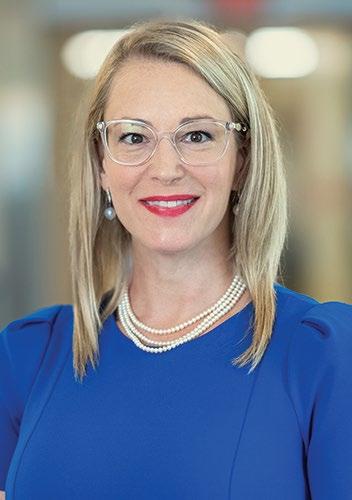
As I reflect on the transformative power of philanthropy, I can’t help but think about what an honour it is to serve in this sector. Throughout my career, I’ve had the privilege of meeting people from all walks of life who want to change our world for the better. I’ve seen firsthand the incredible impact that can happen when an entire community unites around a shared vision and purpose.
Philanthropy isn’t limited to a select number of wealthy families in our country. It’s not just about writing big cheques. Everyone, regardless of background or means, holds the power to make a difference. This concept of “approachable philanthropy” has been a guiding force throughout my career and certainly in my work as CEO of UHN Foundation, where we raise funds in support of Canada’s #1 hospital.
This belief is also at the core of our UHN Impact Collective (UIC), a volunteer group of next-generation leaders who are redefining what it means to give back. The UIC has a clear mission: to cultivate a new generation of philanthropists who are committed to helping UHN continue to reimagine health care. This impressive group is lending their time, talent, networks and fresh perspectives to not only raise funds for UHN, but to get more people aware of and engaged in our cause. And they do so in a variety of ways — from dinners and speaking engagements to yoga classes and pickleball tournaments. Their hard work embodies approachable philanthropy in action.
The creation of the UIC reflects our belief in the power of community, and has benefits for both sides that go beyond dollars and cents. By providing a platform for next-generation leaders to explore their potential as volunteers and philanthropists, we are at the same time gaining a better understanding of how to connect with an entirely new cohort of supporters — ones who may not have the traditional direct connection to our cause (in this case, UHN patients or their loved ones).
At UHN Foundation, we are committed to democratizing philanthropy and empowering individuals of all ages and stages to recognize themselves as philanthropists. While we certainly
appreciate the transformative power of major gifts and large-scale donations, we want people of all giving levels and capacities to feel that they play just as important a role in transforming health care.
Whether it’s volunteering, organizing a fundraising event, or simply helping to spread the word on social media, there are countless ways people can show their support and drive meaningful change. I recently met two young siblings who donated proceeds from a chocolate bar fundraiser in honour of their late grandmother’s care team. I hope they know that their simple act of kindness not only goes a long way to help the hospital, but also in lifting the spirits of the teams at UHN who go above and beyond for our patients every day.
We all have the power to change the status quo of health care. Donor support through UHN Foundation is helping fund groundbreaking research, acquire the latest and greatest technology, provide new life-saving treatments, and recruit the next generation of great medical minds. The work happening at UHN has an impact close to home, but also around the world. And so every donation, regardless of its size, is helping UHN change the world.
Philanthropy can and should be approachable. It is our job as fundraisers to help people feel empowered to make a difference. As I look to the future, I am excited about how the UIC will continue to evolve. I am equally as excited about the work we are doing to call on more members of the community to join us in our mission to help UHN reimagine health care. Because there is nothing more powerful than a community united.
JULIE QUENNEVILLE is the CEO of UHN Foundation. Quenneville’s acknowledged dedication to health care has earned her numerous accolades, including being named one of Canada’s Most Powerful Women; one of Concordia University’s Top 50 under 50; and receiving the Medal of the Quebec National Assembly. She serves as Chair of the Banff Forum and is a member of the Executive Committee of the 2024 President’s Cup, a global team golf competition which will be played in Montreal. Her vast knowledge of philanthropy, modern business strategy, and government relations has made her a sought-after speaker on multiple platforms. Quenneville is a change agent, a passionate advocate for innovative research, and a firm believer that advancing medicine is a global responsibility. She writes this column exclusively for each issue of Foundation Magazine.

 BY NICHOLAS PALAHNUK
BY NICHOLAS PALAHNUK
Recently at a philanthropy conference in New York, I talked with dozens of people who have big visions for change. They are making bold gifts to empower and fuel the work of frontline leaders in human rights, climate change, journalism, and democracy. The stakes are high and they want to be strategic so their giving makes the greatest possible difference.
The reality is, though, that many of them are making gifts without access to real-time data to show how those commitments impact their long-term strategy.
Sophisticated software exists for people who want to accumulate wealth, plan their retirement, or compare investment strategies. Until now, there has been no software with this capacity to support planning in philanthropy.
I learned this for myself when I started my foundation three years ago. I searched unsuccessfully for software that would help me align my giving strategy with my values and resources. Even among professors who study the nonprofit sector at Harvard, where I am pursuing a degree, I couldn’t find anyone who knew of such a tool.
In need of a solution for my foundation, and wanting to
“I know I have a lot to learn, so I built a flexible giving plan that allows me to respond to new requests.”

be part of the solution for others, I spent a year interviewing people about their giving, and I researched the most pressing questions in philanthropy today.
As the founder of a wealth management practice, I’ve always been obsessed with understanding clients’ perspectives. Now, I am also obsessed with the perspectives of people who fund the social sector, and with helping them and their advisors to get charitable money moving.
After a year of deep listening, I launched PhilanthPro, a suite of tools and resources that bring the power of financial planning to philanthropy. Now, people who hold charitable accounts are equipped with software that supports bold and strategic giving.
Hundreds of billions of dollars sit in Donor Advised Funds (DAFs) and foundations that could be mobilized by frontline organizations that are driving positive change now. PhilanthPro is one actor within the movement of people and organizations that want to get these philanthropic dollars moving faster and more effectively.
While launching PhilanthPro, I met powerful advocates and innovators, and now I want to introduce you to some of these thinkers. In the following months, we will bring you a series of Q&A with established advocates in the philanthropy field.
The next issue will feature an article with Jennifer Risher, author of We Need to Talk: A Memoir about Wealth. Jen is also the co-founder of #HalfMyDAF, a matching program through which she has incentivized $50 million in giving from DAFs.
In the Q&As that follow in this series, I will speak with banking and wealth management leaders about their clients’ growing demand for philanthropy planning, with experts on the historic wealth transfer, and with frontline CEOs. Please join me as we learn together.
Philanthropy is deeply personal, and the stakes are high. Many of us struggle with whether or not to: spend down our DAFs and foundations, make large or unplanned transformational gifts, or involve younger inheritors. I’m on this journey as well, and I’m glad to be in the company of people who think hard about the good they want to do in the world.
Sharing stories helps us to clarify our values, gain strategic insights, and form a community. In this spirit, I’ll share a bit of
my story as we kick off this series.
I began working at a bank before I finished high school. Helping people manage their money always gave me a sense of well-being, especially early in my adult life when I came out as a gay man and was carving my own path forward. Behind the teller counter, I studied between customers and soon became the youngest Certified Financial Planner in Canada at the age of 21.
Only a year later, I lost my father to suicide. I was young, and without knowing any other way to grieve, I threw myself into building a practice where I was able to help people plan their futures. I built a community of clients, colleagues and peers and grew to be a top advisor. But over time, I began to ask myself if I had something more to offer. It was time to start giving back in a bigger way.
I didn’t have a lot of experience in philanthropy, but I had an anchor. I wanted to help people who suffer from mental health challenges, like my father, and I wanted to put my money to work in some of the places where mental health support is least accessible.
I decided to return to Malawi, in East Africa, where I had volunteered as a teenager. Meetings with young people, psychology students and graduates, and nonprofit leaders, convinced me that I was on the right path.
I know I have a lot to learn, so I built a flexible giving plan that allows me to respond to new requests. I made initial gifts to support research and mental health programs in Malawi and in Canada, and I’m helping the leading mental health support organization in East Africa to expand its program to Malawi. As I grow the work and learn about the nonprofits with whom I align, I plan to do more long-term, planned giving that puts more control in the hands of my nonprofit partners.
One of the things I learned from old and new friends at the summit in New York is how much we have to learn from one another. I look forward to sharing more with you through the upcoming Q&A series, and I hope to hear from you.
NICHOLAS PALAHNUK is Founder of PhilanthPro and can be reached at nicholas.palahnuk@philanthpro.com

Associal circles shrink and Canadians are increasingly disconnected, the number of Canadians giving to charities continues to decline — straining charitable operations across the country.
It’s very likely that you know of someone like Jessica: she’s 32 years old and shares a small apartment with her friend. Jessica was originally from a small town, but moved away from her family and friends right before the start of the COVID-19 pandemic to start a job. She was just starting to get to know her coworkers and going into the office every day. Then, the lockdown started and everyone was working from home. Since then, her company has transitioned to a remote work model, so unless she gets out to her local running club or plays pickleball with her roommate and their friends, she doesn’t often get the chance to meet new people. Jessica is also socially conscious and cares deeply about fighting against climate change but hasn’t yet donated, volunteered, or attended climate change protests to advocate for the development of good government policy to tackle this global threat.
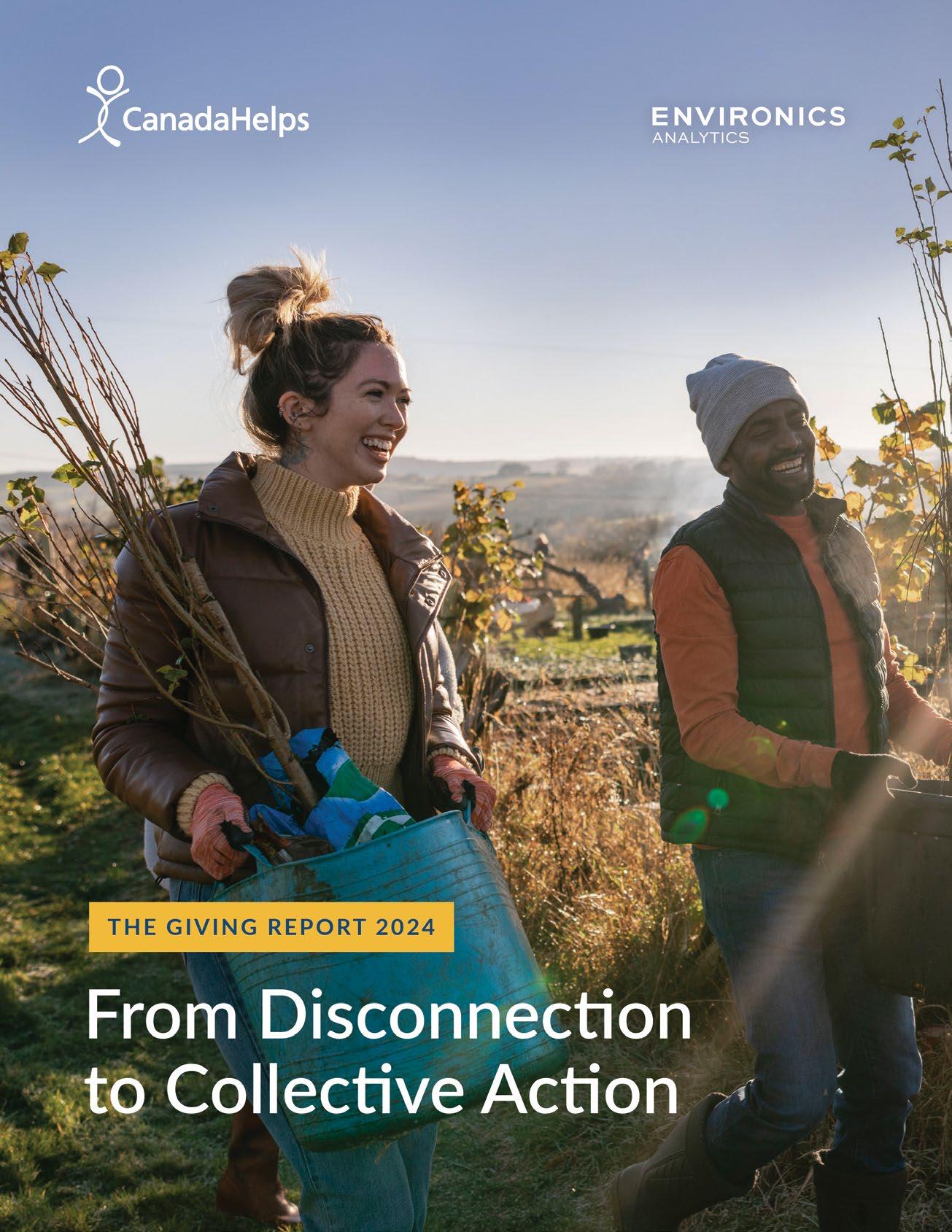
As we emerge from the shadows of the pandemic, a sobering reality awaits those of us in Canada’s charitable sector. Despite the growing complexity and urgency of societal problems, the fabric of giving in Canada is fraying at an alarming rate, it is having an adverse effect on giving, and it is threatening the health of our communities overall.
Jessica’s story is highlighted in the 2024 Giving Report by CanadaHelps and represents so many of the stories we have gathered from our research this year. She is an example of how so many Canadians are now interacting with the world around them: their social circles have shrunk and they have become disconnected, and while they care about social issues, their financial support for charities focused on the causes they care about is limited or nonexistent.
The seventh edition of The Giving Report, created in partnership with Imagine Canada and Environics Analytics, illuminates the eleven-year decline in the number of Canadians who are giving to charities. In 2010, tax filer data revealed that 23.4 percent of Canadians made charitable donations, but in 2021, that number had dropped to 17.7 percent.

Some of the contributing factors have been widely reported, particularly ongoing economic uncertainty and the current affordability crisis. Other factors include the desire from some Canadians to receive more information from charities about the impact of their gifts, the declining number of religiously active Canadians (faith-based practices have been historically tied to charitable giving), and the continued trend of fewer Canadians from younger generations engaging in traditional forms of giving when compared to generations prior.
One trend behind the decline in donors which stands out in the new research — as illustrated in Jessica’s story — is that social circles are shrinking and Canadians are feeling less connected to their families, friends, neighbours, and communities. In 2013, the number of Canadians who reported having six or more close friends was 37 percent, but by 2022, that number dropped to 22 percent. In that same time frame, Canadians who reported feeling a strong sense of community belonging also dropped by 12 percentage points.
When we look at how these shrinking social circles are affecting giving, the correlation is clear. While just over half of Canadians (53 percent) who reported having very few close friends donate to charities, 84 percent of Canadians who report having many close friends donate. It’s clear that when we feel
connected to our communities around us and foster positive, close relationships, we take a more active role in making change.
The overall shrinking pool of Canadians giving is particularly concerning especially as the majority of charities are facing increasing demand for services.
Last year, CanadaHelps reported that more than half of charities (57 percent) were not able to meet demand, and we have not seen signs that this has improved. An Ipsos survey from CanadaHelps conducted in fall 2023 revealed that one in five Canadians are turning to charities to meet essential needs such as food and shelter. Of those relying on these services, nearly seven in ten (69 percent) were seeking support from charities for the very first time. Examples of this demand has played out at food banks across the country and reported in Food Banks Canada’s 2023 Hunger Counts Report which revealed that there were two million visits to Canadian food banks in March 2023.
As fewer Canadians are giving, charities are relying on a shrinking pool of funds to meet this demand which presents greater challenges. Charities that do not focus efforts on meeting essential needs such as food and shelter, but provide other immeasurable societal benefits, such as arts and culture
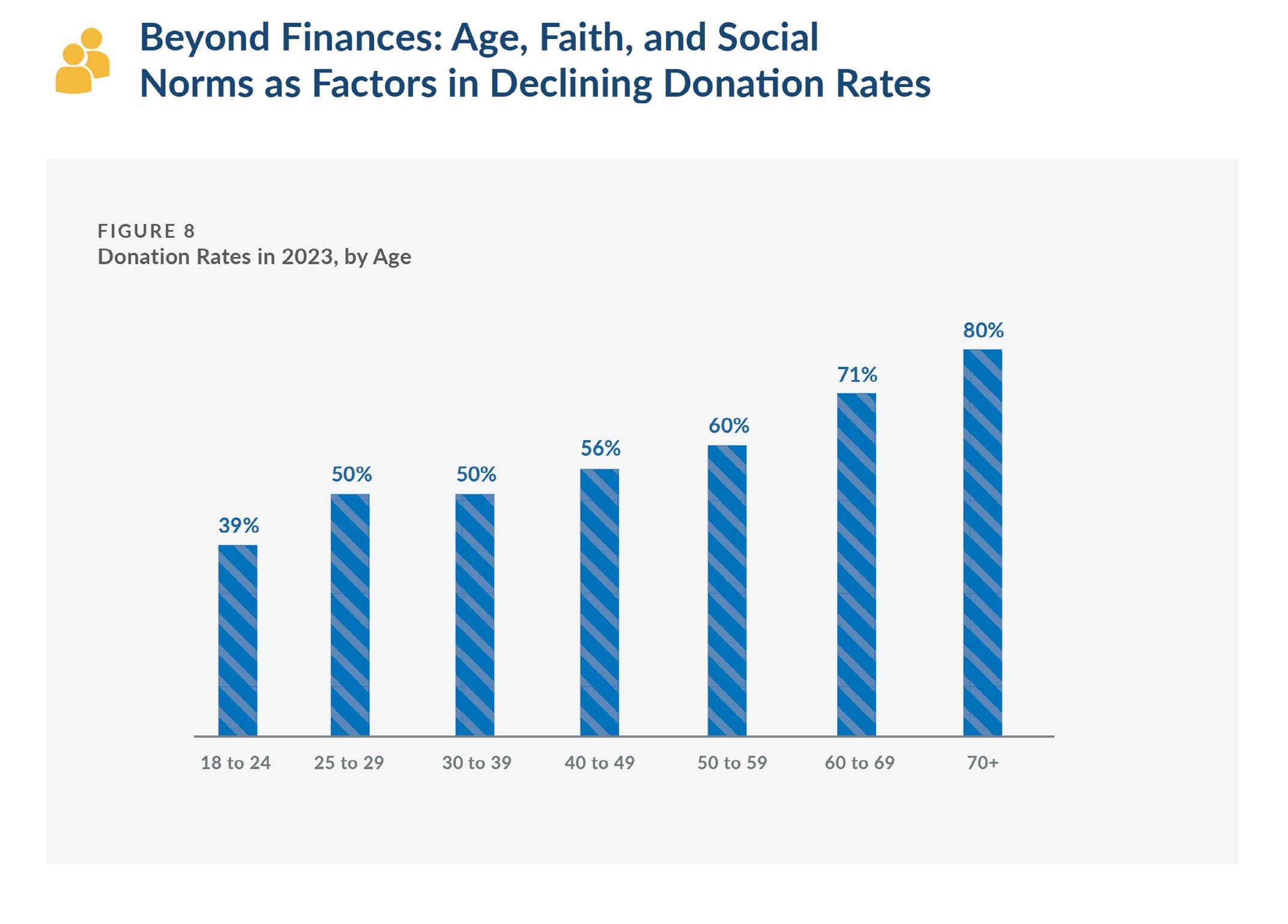
organizations, community centres, education, and more are also at risk.
The Giving Report also reveals a troubling paradox — while Canadians report significant concern and anxiety about climate change and protecting the environment, very few Canadians actively engage in measures to do anything about it. According to survey findings, nearly half of Canadians (48 percent) report that they experience anxiety about climate change on a somewhat regular basis, and 32 percent of Canadians report that protecting and preserving the environment and fighting against climate change is a top cause for them.
However, data indicates that this anxiety and concern isn’t translating into action. Processing close to half a billion dollars in donations annually, only 1.5 percent of donations made through CanadaHelps support charities focused on protecting the natural environment around us. To truly tackle climate change, we need to do more to ensure that organizations receive the critical funds needed to preserve land, advocate to government leaders for critical policy, provide education to children, protect wildlife, and so much more.
While the data presents a worrisome narrative, and as broader society struggles with the shift towards individualism, disconnection, and shrinking social circles, there are also signs of hope.
Canadians setting up a monthly donation to support their favourite charities continues to grow, increasing by 11 percent in 2023 compared to the year prior. Monthly donations give Canadians the opportunity to budget and strategically plan their giving; this is a critical channel of support for charities as it represents sustainable revenue that they can rely on for program planning throughout the year. Online giving also continues to grow, with donations nearly doubling on the CanadaHelps platform from 2019 to 2023, and gifts of securities increased by 32 percent in 2023 compared to the year prior.
Hope is also strongly tied to action when it comes to the big problems that may appear insurmountable, like combating climate change. Among those who feel hopeful about the future of Canada, 18 percent say they have made a donation to a charity supporting the environment in the last year, while nine percent who say they feel somewhat hopeful have donated to environment charities over the last 12 months, and only four



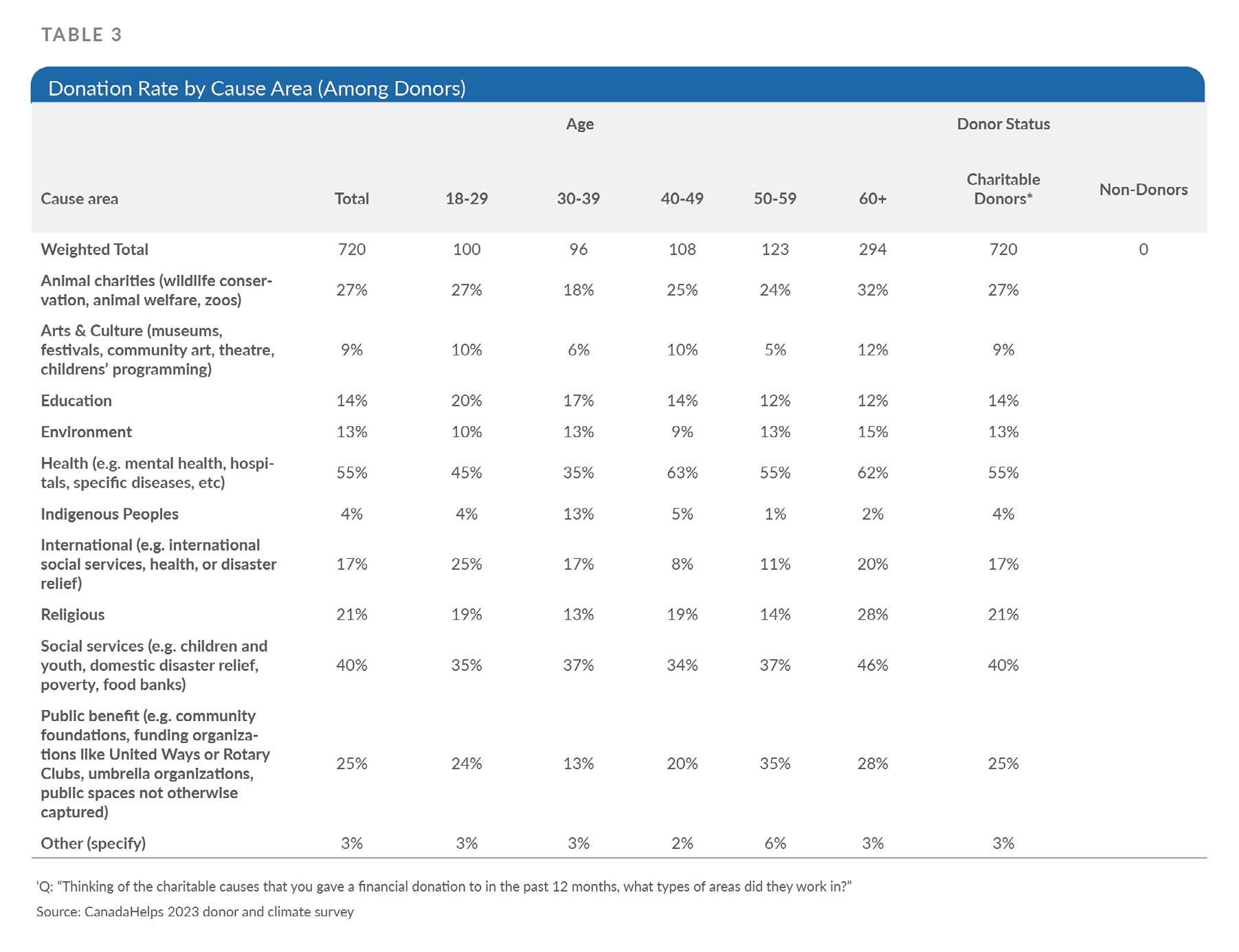
percent of Canadians feeling somewhat hopeless for Canada’s future have done the same.
While we move forward together, strengthening social connections is key to building strong, healthy, hopeful, and resilient communities to reverse the downward trend of fewer Canadians giving to charities that are helping to build those vibrant communities.
To learn more and download your copy of The Giving Report 2024, visit www.CanadaHelps.org
DUKE CHANG is the President and Chief Executive Officer of CanadaHelps, Canada’s largest online donation and fundraising platform in Canada. Since 2000, CanadaHelps has raised more than $3 billion from more than 4.6 million Canadians across the country.

Over the past four years, direct mail performance in Canada has been all over the map. We’ve seen record highs (looking at you, 2020) and big drops (hello, 2022), and everything in-between.
I think we’d all agree we’re ready for some stability, and that’s why we’re quite happy to report that direct mail in 2023 was remarkably… unremarkable.
In fact, this year’s data indicates that direct mail performance in Canada remained mostly flat in 2023, with only minor variances from the year prior. We’re now marking 2023 as the year you can compare against going forward, without worrying about the impact of pandemic highs and lows.
The exception is (and will likely continue to be) the cost to acquire a new donor. That’s a figure that continues to grow amidst rising production costs and acquisition response rates that have been steadily declining.
An exciting bright spot? Now more than ever, the data is showing us that the new normal includes multi-channel giving. While all of the benchmarks figures held generally steady in 2023, gross revenue from direct mail declined by 14 percent. What gives? Well, other channel revenue rose in 2023 by — you guessed it! — 14 percent. Combined revenue (that is, revenue from direct mail and other channels) is flat year-over-year.
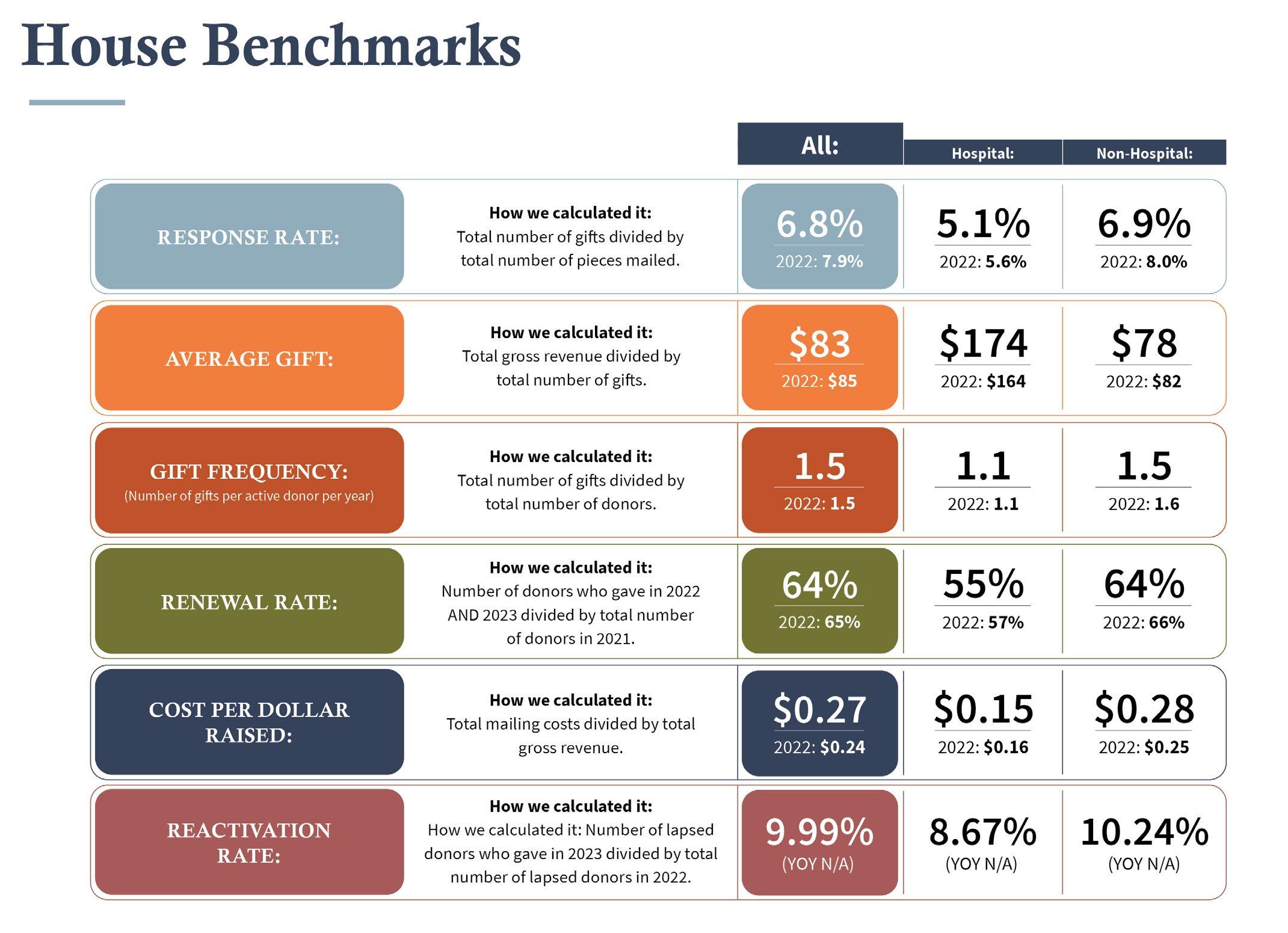
What does this mean? Layer on our finding from 2022’s Changing Tides report, that 66 percent of direct mail donations are made online, and the picture starts to come into focus. The giving experience in 2023 has evolved to span channels. Or, to put it another way, multiple channels are working together to secure a single gift.
The Highlights
So, how does the mail fit in the mix?
❯ The sector is still grappling with high paper and production costs. Combined with a 1-point drop in response rate, and a $2 dip in average gift, the cost per dollar raised grew by $0.03 to $0.27 in 2023.
❯ Charities who submitted multi-channel results data saw their direct mail revenue drop by the same amount that other channel revenue rose (14 percent).
❯ The data shows that charities mailed 2.3 percent more pieces this year. This, coupled with a decrease in House response rate, has us speculating that charities were mailing further back into their long-lapsed files in 2023, looking to reactivate more donors — who would, by their nature, have a lower response rate compared to active donors.
❯ It was more expensive to acquire a new donor through the mail in 2023. The cost to acquire rose 16 percent year-overyear to $161. With an average gift of $60 (which is up $3), this means that charities will now need three gifts from a new donor to break even.
❯ Rented and traded lists yielded the best acquisition response rates at 1.1 percent and 1.9 percent respectively, while ex-patient and unaddressed mailings boasted a higher average gift ($117 for ex-patients and $155 for unaddressed). If you care to grow your file in a meaningful way, your second-gift (or more importantly, third-gift!) conversion strategy has never been more crucial.
❯ As we look to a multi-channel approach, other channel response rates stayed relatively stable (a small decline of 0.3-points), while average gift rose by an impressive $16.
❯ Hospital foundations saw lower response rates than other charities. House donors responded at 5.1 percent for hospital foundations, compared to 6.9 percent for non-hospitals, while acquisition response rates were 0.6 percent compared to 1 percent for other causes. Even so, hospital foundations saw a smaller decline year-over-year than non-hospitals. The hospital foundation average gift,

nearly $100 greater than the sector average at $174, yields a much lower cost per dollar raised.
❯ Hospital foundations are struggling to renew donors, with a 55 percent renewal rate compared to 64 percent and a gift frequency of 1.1 compared to 1.5 for non-hospital foundation donors.
The Participants
Let’s take a moment to send a cosmic hug, handshake, or high five to the 49 charities who made this report possible in 2024. These awesome organizations shared their time, their energy, and their 2023 direct mail results with us. They represent a mix of causes, organizational size, development team size, and revenue raised.
And they all share one thing in common: Their contribution makes the whole sector more informed and better understood as a result.
Almost across the board, hospital foundation benchmarks are lower than those for other causes. In past years’ reports, we’ve separated healthcare and nonhealthcare charities to provide
benchmark clarity. Those groups tended to have different enough results that warranted splitting them.
This year, hospital foundation performance was so markedly different that we decided to separate that group from everyone else (including healthcare-adjacent charities) to give us a clearer picture of direct mail performance. In 2023, hospital foundation direct mail donors responded at a rate 1.8-points lower than their non-hospital counterparts.
Renewal rates were 9 percent lower, reactivation rates 1.6 percent lower, and gift frequency was 1.1 compared to the nonhospital 1.5.
What’s interesting though, is that hospital foundation response rates actually experienced less of a decline than other charities.
This is surprising, given that Canadians are feeling less confident in the health care system. Response rates could have plummeted, with donors shying away from giving to a system perceived as broken beyond repair — but they didn’t.
At the same time, hospital foundation donors are generous folks, who give nearly $100 more on average than other donors — and this gives hospital foundations a much more competitive cost per dollar raised of $0.15, where other charities are investing

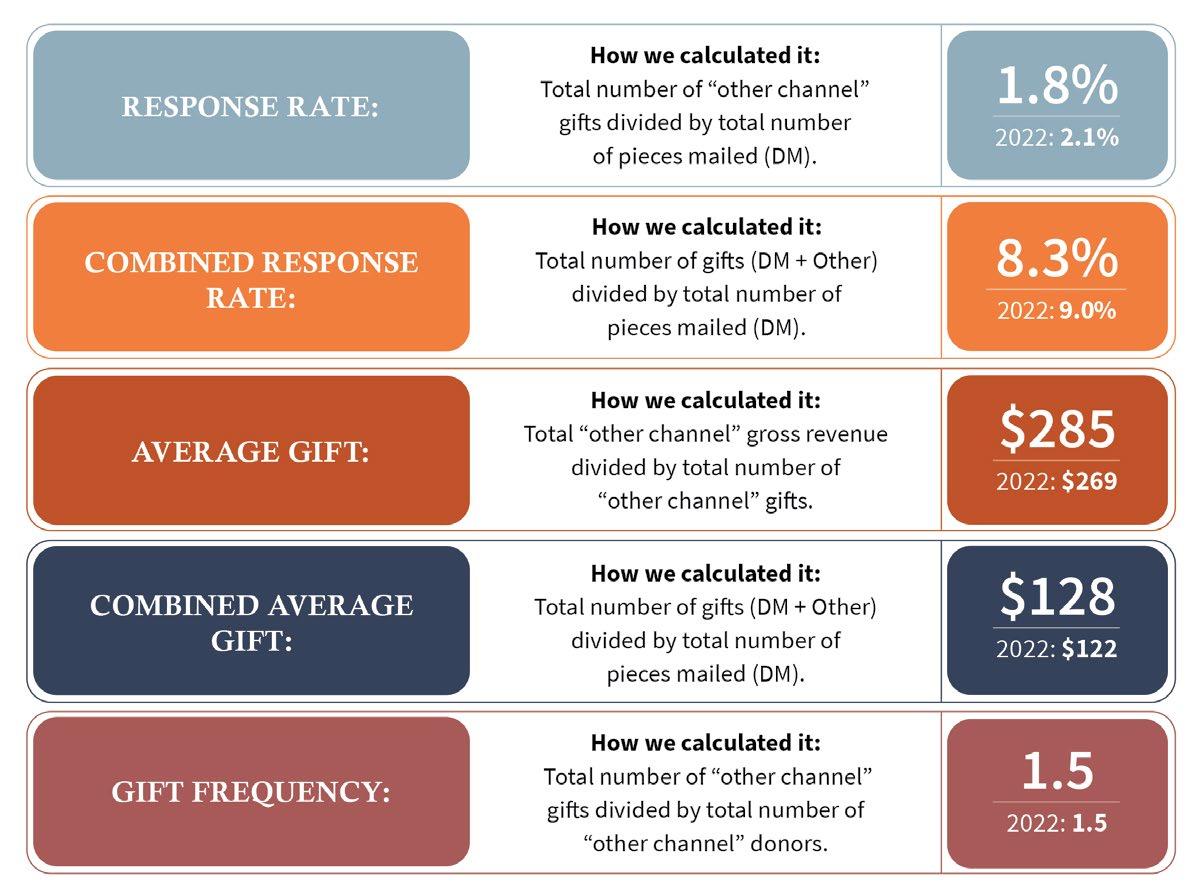

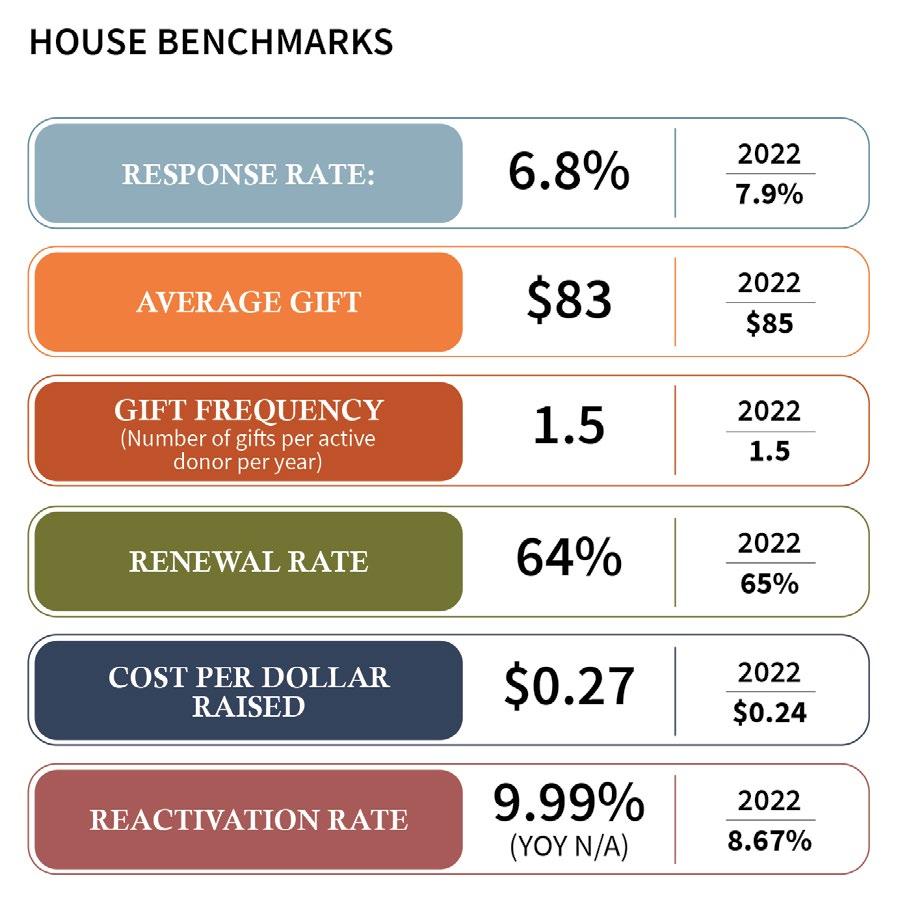
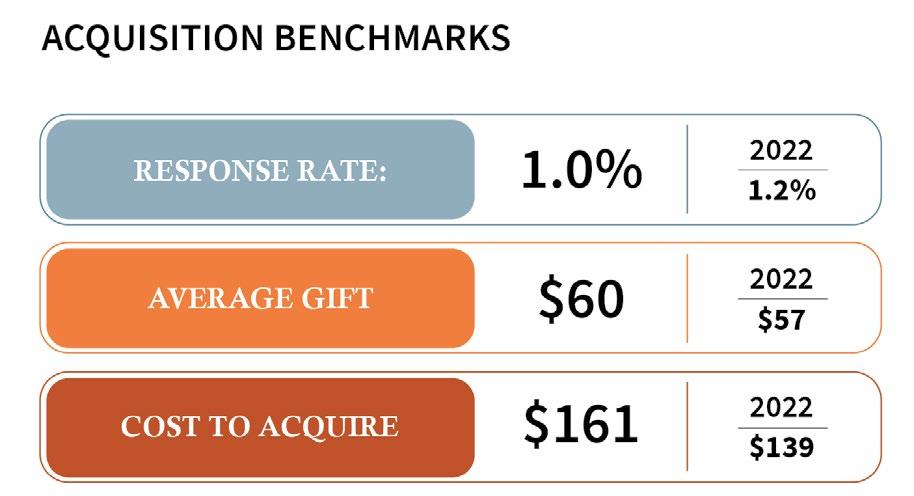
$0.28 to bring in $1.
Additionally, hospitals can use ex-patient prospects in their acquisition efforts, and those lists yield the greatest upfront ROI of any acquisition source, clocking in at $0.74.
A total of 49 charities provided us with direct mail results from 2022 and 2023, including total revenue, total costs, number of donors, number of gifts, and more.
Organizations had the option to provide us with “other” revenue results — that is, revenue that is driven by direct mail but is received through other channels. This includes donations from direct mail recipients who make their gifts via email, website, social media, and telemarketing.
By “House” donors, we mean those who have made a donation to the charity previously, no matter the year, amount, or frequency.
“Acquisition” donors are a purely prospective audience with no gift history with the organization.
We asked organizations to exclude monthly donor data so as not to skew the number of gifts in a calendar year.
We can provide hospital foundation-specific benchmarks in this year’s report due to the large number of hospital participants. Wish we could do the same for your sub-sector? So do we!
Encourage your colleagues at similar orgs to share their results next year. If we have 10 or more charities for a given group, we can develop unique benchmarks.
And lastly, we’ll caution you against comparing the 2023 Benchmarks report to any that came before it. The charities who participate change year-over-year, meaning the dataset does too. When you see us reference year-over-year changes, we’re referring to results.


 BY SERENA HAK
BY SERENA HAK
It is no secret that for decades there has been a push, both in the financial sector and the charitable sector, for more strategic collaboration to enhance charitable giving.
As financial advisors, we know that this is good for our business. Clients appreciate advisors who understand their values and priorities. By helping clients make impactful charitable gifts, advisors can strengthen their relationships with them. This personal touch can lead to long-term client loyalty.
The financial sector has participated in re-directing billions of tax dollars to the charitable sector. Today, we have over 6,700 private Canadian foundations accounting for $100 billion charitable dollars. We also have over 4,700 Canadian public foundations. These public foundations include our Donor Advised Fund (DAF) market. The DAF was in response to our clients’ demands to create a charitable giving vehicle that could be incorporated within their financial portfolio while providing a repeatable and convenient way of contributing to the causes they care about. The DAF Market is set to hit $12.5 billion by 2025.
We have one of the most incentivized charitable tax systems
in the world. Advisors look to tax minimizing strategies to create efficient charitable giving opportunities to help our clients navigate the complex and ever-changing Canadian tax laws. Additionally, by integrating charitable giving into a comprehensive financial plan, advisors ensure that clients can support their philanthropic endeavours without jeopardizing their financial security. Whether your client is giving through appreciated securities, insurance policies, DAF, private foundation, or their estate — there is so much opportunity for our clients, their families, and the communities they care about most. However, with this opportunity for impact, are we also creating space for our charitable sector to join in on the conversation? Whether the conversation be with you or your clients, when talking about charitable giving ask yourself the question… “Who is not at the table that should be?”
The charitable sector, and the people who work in it, are our allies and could be your secret weapon to achieving the highest levels of impact for you, your clients and their charitable dollars. For example, have you engaged with your local Community Foundation? For those clients looking to identify with local city
issues and work with grassroots organizations in their own backyard, The Vital Signs Report is an essential resource. Or perhaps, have you reached out to an organization that your client is thinking about donating to and asking where their biggest need is rather than assuming a directed gift? Asking the charitable expert in your community will position you with your clients as a valued resource and trusted partner.
Our charitable sector is an essential resource for you and your business. The following opportunities are available to help enhance your charitable giving expertise and business development:
Education & Training: Industry leaders provide workshops and seminars to help you stay up to date on strategies, legislature and charitable giving trends. Many of these sessions qualify for continuing education (CE) credits.
Bespoke Collaboration on Giving Strategies for a Particular Client: Many charities can work with you and your client to design their customized giving plan, discussing impact and designing your client’s goals with a holistic view of the issues that are trying to be addressed. This strategy in particular aligns expectations and creates a more informed and connected relationship with the cause and organization that your client cares about.
Networking and Relationship Building: Have you joined a professional network or association for financial advisors, such as the Canadian Association of Gift Planners? This can help you build relationships and raise awareness about the charity within the advisor community and creates learning opportunities.
Leveraging Technology and Data for the Client: The use of donor management systems to track and report on donations
EDUCATION & TRAINING
COLLABORATION STRATEGIES NETWORKING BUILDING
LEVERAGING TECHNOLOGY
DATA SHARING
MARKETING & COMMUNICATION SUPPORT LEGISLATIVE CHANGES
and how funds are used, demonstrates the impact of your clients’ contributions.
Data Sharing: By working with charities to understand their relevant data, you can better understand giving trends, donor/client behaviours, and the result of different types of donations. This information can help you make more informed recommendations to clients and positions you as valued ally.
Marketing & Communication: You can get creative here — are you able to co-brand materials or host a joint-event? Or are you able to develop case studies and encourage your clients to create testimonials to help their charity of choice? The possibilities are endless.
Support During Legislative Changes: Perhaps one of the most important elements of any charitable organization is their advocacy work and their ability to provide financial advisors with real-time updates on legislative changes that affect charitable giving, such as tax reforms or new regulations.
These are just some of the ways that you, the advisor, can benefit from working with our charitable community. We must remember that every time we are initiate the generosity conversation and direct charitable dollars, we have a responsibility to ensure that we are being mindful of how it affects its beneficiaries. Our charitable sector is our secret weapon to helping clients become more informed donors, creating more impact and enhance our business by creating a more valuable client experience for those we work with.
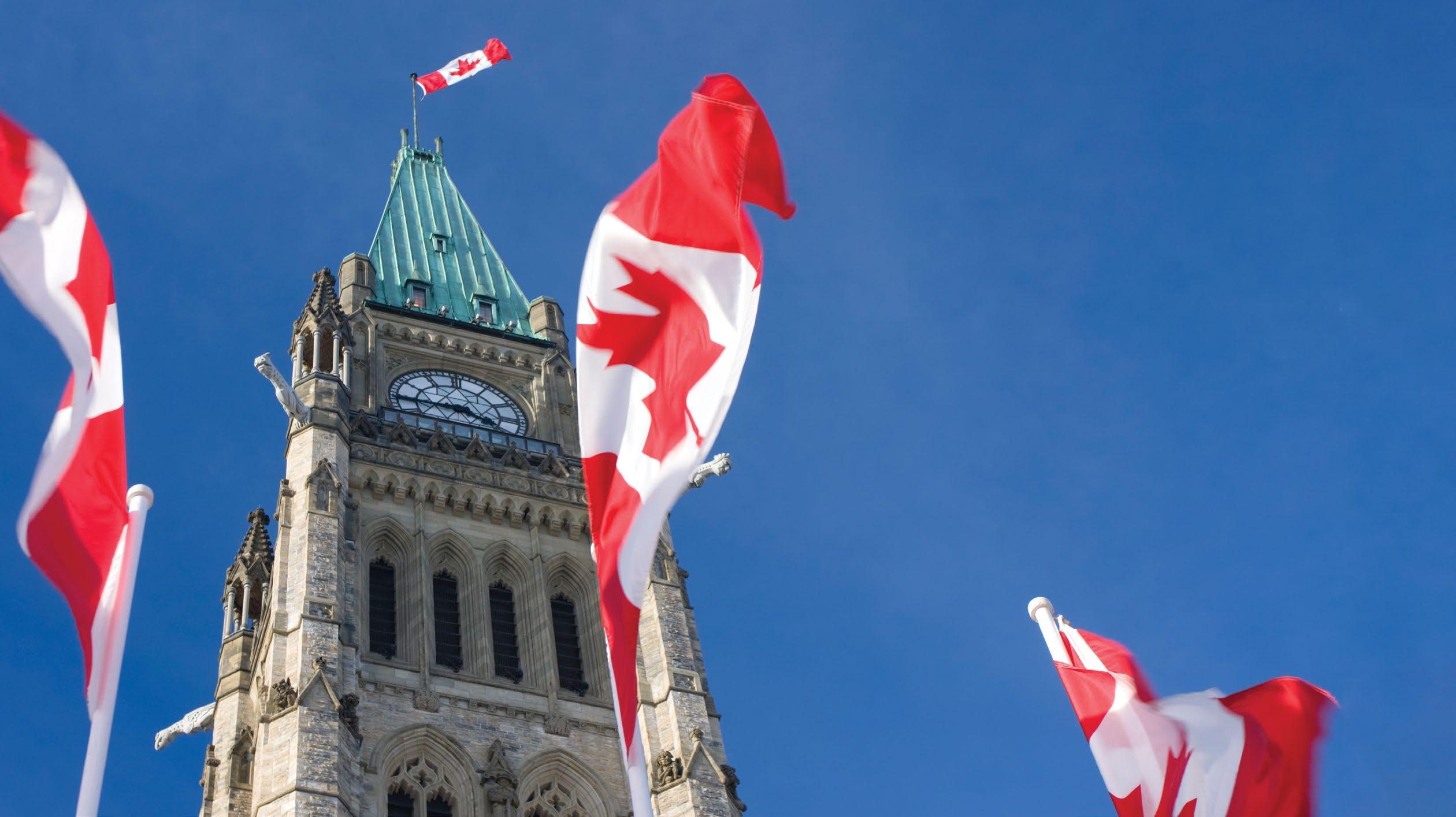 BY CAGP STAFF
BY CAGP STAFF
In effect for almost forty years, AMT was introduced as a means for the government to ensure individuals and certain trusts pay at least a minimum amount of tax. AMT is an alternative tax regime where high-income earners and trusts calculate their income tax liability based on rules that allow for fewer tax deductions, exemptions, and credits than under the regular tax rules. The higher of the two tax liabilities becomes the amount these taxpayers are required to pay. Additional tax paid as a result of AMT can be carried forward for seven years and used against regular tax to the extent regular tax exceeds AMT in those years.
Last year’s federal budget proposed reforms to the existing AMT tax rules which have been in place since 1986 with nominal changes. This was followed by draft tax legislation being released on August 4, 2023, and then a month-long public consultation period. Unlike the existing AMT tax rules, the proposed amendments to the AMT rules have the potential to negatively impact charitable giving by high-income earners. The 2023 Fall Economic Statement did not table the tax measure changes related to AMT as the government suggested further study was required.
The 2024 federal budget includes further amendments to the AMT tax rules that were originally proposed in the 2023 federal budget and drafted in the August 4, 2023 tax legislation. In particular, this year’s budget proposes that taxpayers can
claim 80 percent of the charitable donation tax credit when calculating AMT, instead of the 50 percent proposed in the 2023 budget — which is good news. Second, changes to the capital gain inclusion rate on realized capital gains on or after June 25, 2024, may keep more donors in the ‘regular tax system’ rather than pull them into the AMT tax regime.
Unfortunately, the 2024 federal budget does not propose to change the draft legislation which will include 30 percent of capital gains on the charitable donations of publicly-listed securities for purposes of the AMT calculation. This element of AMT tax reform stays as it was originally proposed in the 2023 federal budget.
The 2024 budget proposes to increase the capital gains inclusion rate from 50 percent to 66.67 percent for individuals on capital gains in a year that exceed $250,000 and for corporations and trusts. Individuals will continue to include 50 percent on the first $250,000 of realized capital gains in the calendar year. These changes apply to capital gains realized after June 24, 2024. The question arises: will the increased inclusion rates affect charitable giving and should gifts be made before or after June 25, 2024?
There are two categories of gifts: those that yield taxable capital gains and those that don’t. Gifts with capital gains that are not taxable are gifts of publicly-listed securities, Canadian
cultural property, and ecologically sensitive land. In these cases, the Income Tax Act provides that the capital gains are deemed to be $0 for income tax purposes. We assume that after June 25, 2024, the capital gains on these donated assets will be deducted from the total capital gains before determining the applicable taxable inclusion rates. Since capital gains on these donated assets are reported at nil, the change to the capital gain inclusion rates should not make a difference to the donor where AMT doesn’t apply. In other words, donors do not pay capital gains tax on these charitable gifts whether they donate before June 25 or after June 24. However, donors subject to the 66.67 percent capital gains inclusion rate will save more tax after June 24, 2024, because the tax rates will have increased.
One aspect of the capital gains changes, which has not yet received much attention, but is important for our work, is the effect on estates. There are very few Canadians who realize annual capital gains over $250,000. But there are many Canadians, who at death may have capital gains over $250,000, because they are required to report the accrued gains on capital property they own at the time of their death. For these Canadians, income tax at death will increase. Donors may want to consider a gift in their will of appreciated publicly-listed securities to charity to reduce their taxable capital gains at death.
The second category of gifts are those that yield capital gains

that are taxable. These include gifts of private company shares, real estate and mining flow-through shares. Generally, in these cases, the donor receives a donation tax receipt for the value of the donation and has to report on their tax return, 50 percent of whatever the accrued capital gain on the donated asset is for a donation made prior to June 25, and 66.67 percent of the accrued capital gain for a donation in kind after June 24. So, for taxpayers who are subject to the higher inclusion rate (individuals with capital gains over $250,000, and corporations and trusts), the tax savings are less after June 24 because the donor will have a higher income inclusion rate on the capital gain of the gifted property. In these cases, donors may want to make the gift before June 25 to take advantage of the lower capital gains inclusion rate.
Let’s consider a few examples of the impact of these rules on federal taxes.
Illustration A – Gift of publicly listed securities.
Mr. A has $1,000,000 of employment income and $200,000 of capital gains. He wants to donate $500,000 of publicly-listed securities (“PLS”) with a cost base of $100,000 to charity. This charitable gift of PLS does not trigger additional capital gains to report for tax purposes.
The new capital gains inclusion rules have no impact on Mr. A’s gift because the capital gains on the gifted capital property
are considered to be $0, assuming AMT does not apply to Mr. A. Therefore, the timing of this gift does not change Mr. A’s tax liability. Also, note that the gift does not increase Mr. A’s taxable capital gains above the $250,000 threshold for the higher capital gains inclusion rate.
Under AMT rules, 30 percent of the $400,000 capital gain on the gifted shares, or $120,000, as well as 100 percent of the $200,000 other capital gain are added to Mr. A’s income. 80 percent of the normal donation tax credit of $165,000 (33 percent of $500,000) or $132,000 can be claimed for the AMT calculation. These are federal tax numbers only. There is also provincial or territorial AMT to consider as well. Given the AMT’s exemption on the first $173,205 of adjusted taxable income under the AMT rules, the donor will pay income tax under the regular tax rules and will not pay income tax under the AMT rules. However, since many other factors that could impact his tax return, Mr. A should confirm his AMT calculation with his accountant.
Now let’s consider that Mr. A donates $500,000 of private company shares with a zero cost base, instead of gifting publiclylisted securities after June 24, 2024, and sells the balance of his private company shares with a zero cost base for $2,500,000.

The capital gain of $500,000 on the gift of these shares is taxable. Given the donor has $2,700,000 of other capital gains, $250,000 of the gain on the gifted securities will have a 50 percent inclusion rate and the balance of the capital gains of $2,950,000 will have a 66.67 percent inclusion rate. The increased inclusion rate will result in approximately $162,000 more in income tax than if the gift of the shares and sale of the shares were made before June 25.
Under the AMT regime, all $3,200,000 of the capital gain is included in income. Only 80 percent of the donation tax credit is available under AMT. In this example, Mr. A would have owed a small amount of AMT if the capital gain inclusion rates had not changed but now is not subject to AMT.
CAGP is pleased that the federal government has acknowledged the value of charitable giving by the public by not substantially cutting the donation tax credit available to donors who are subject to the AMT tax regime, but more can be done. These rules have become overly complicated with donors/taxpayers having to consider two levels of income inclusion for capital gains, the applicability of AMT, and potential tax elections. Calculating the tax impact of and explaining major gifts of capital property have become that much more complicated!
All Canadian nonprofits and charities with at least 10 employees are eligible to participate and the program is held annually to support a continuous improvement model for your organization.
“We highly recommend the NEOC program for the insights it can o er to nonprofits!”
CMHA York Region and South Simcoe
“This included an anonymous online employee survey done by NEOC, which gathered more and higher quality responses than the in-house surveys we did in the past.”
UNICEF Canada
“NEOC allows small organizations like ours to participate.”
Alberta Retired Teachers Association
Learn more about the Canadian Nonprofit Employer of Choice Award neoc.ca/overview



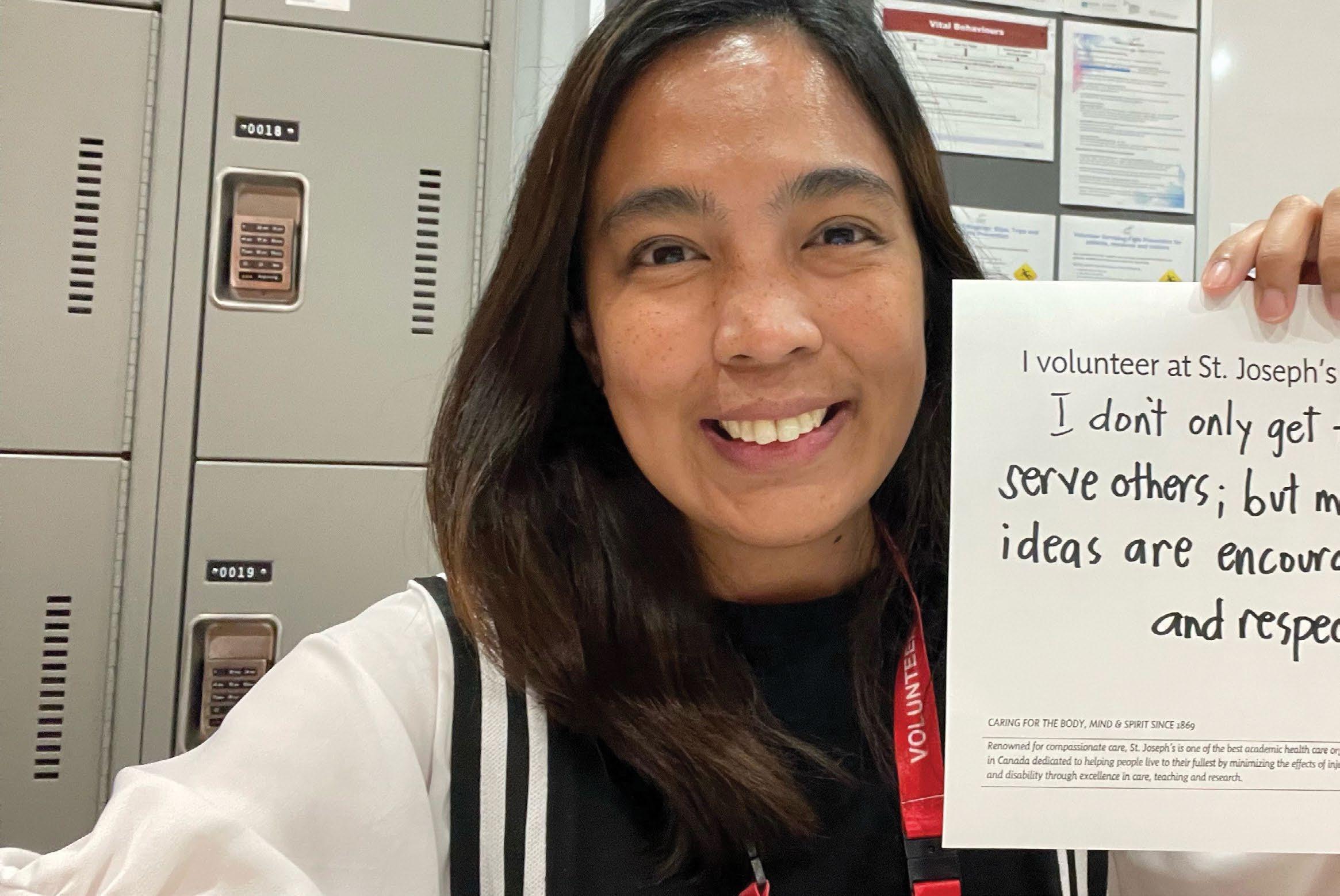
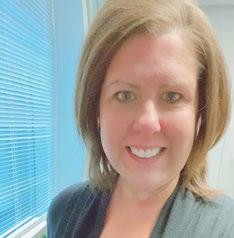 BY TRACY DRENTH
BY TRACY DRENTH
Like many not-for-profit organizations across the country, St. Joseph’s Health Care London (St. Joseph’s), experienced a drastic decline in the number of volunteers post-pandemic. The individuals most relied upon by our hospital were sidelined as they were deemed most vulnerable.
During the peak of the pandemic, my team and I were redeployed to support perimeter screening operations, however,
we also spent countless hours staying connected to our 1,050 volunteers, checking in on them by phone and sending them regular email updates about what was happening within the hospital. At the onset of the pandemic, we knew we needed to keep them safe by removing them from our buildings, but we also went to work to create a strategy to reintroduce them to the hospital as soon as we were safely able to do so.
In the spring of 2023, we realized we were competing with many other local organizations also attempting to regain

their volunteer work force. Since approximately half of our volunteers did not return to the hospital post-pandemic, we knew we needed to change or enhance processes and remove barriers to create an atmosphere that solidified St. Joseph’s as the place of choice for volunteering.
Over the next year, we double downed on efforts on a recovery strategy. The Volunteer Services team focused on recruiting students and youth volunteers, with the University of Western Ontario within walking distance to the main hospital campus and older adult volunteer rates declining. In late 2023, we released a new volunteer recruitment video and social media campaign targeting a younger audience, which resulted in an immediate spike in applications, due in part to a higher than average engagement rate on social media, and based on paid ads, clicks to St. Joseph’s volunteer services

website exceeded the objective set by 432 percent. At the same time, we leveraged a new partnership with Fanshawe College, and invited students from the Fashion Marketing and Merchandising program to gain hands-on experience by creating window and store displays in the six onsite gift shops and variety stores, which are also supported and overseen by our department. It also exposed students to the hospital and possible future volunteer opportunities.
Based on feedback, one of the challenges to volunteer with us has been the requirement to have updated
vaccinations. To address this, we partnered with the Occupational Health and Safety Services Department to provide free tuberculosis testing for new volunteers, as well as any outstanding mandatory vaccinations. Guided by the Ontario Medical Association’s recommendations for those working within a health care setting, the hospital’s health review process has been a barrier for volunteers due to excessive costs within the community for testing, or the requirement for a physician to confirm an individual’s immunity to a number of communicable diseases. If a prospective
volunteer is unable to incur these costs, or does not have access to a family physician, until now, they have been unable to proceed with the application process.
The internal process adjustments weren’t the only changes required postpandemic to align with the hospital’s mission. There was an obvious shift in the landscape of our community, with many patients requiring additional support when they arrive at the hospital. Responding to these unique needs, a new volunteer role called the ‘Appointment Assistant’ was created. This new volunteer role was developed to support patients coming for outpatient appointments, who needed assistance navigating the hospital, but also to help ease the anxiety and confusion for patients, who, in some cases, are nervous about their appointment or procedure. The appointment assistant meets the patient at the entrance, escorts the patient to their appointment, helps with registration if needed, stays in the waiting area during the appointment, escorts the patient back to the entrance and waits with the patient for their ride home.
“I saw Monica (volunteer) as my angel that day,” says Joan, a patient who used the service when she was scheduled to have outpatient cataract surgery, but didn’t have someone to accompany her while in hospital. “She was kind, empathetic and caring. It made me feel loved and cared about. It truly was a gift to have Monica there with me.”
This novel program is catching the attention of hospitals across Ontario. In the planning phases of the program, I contacted other hospitals to see if they had similar programs that could offer some insight. None of them did but more than a dozen administrators indicated they would consider it based on our experience. Although our volunteer service is not about direct patient care, it is our way of being able to contribute to supporting our patients.
The enhancements done over the last few years, in response to a changing demographic in volunteerism and the local community have paid off, as the current number of active volunteers has steadily increased to just under 800. In the Fall of 2023, we conducted a survey using an online tool provided by the
Professional Association for Volunteer Leaders – Ontario (PAVRO) which showcased marked improvements across various metrics compared to previous years and against peers in the province. The confidence and comfort level our volunteers expressed regarding overall patient safety increased by 14.4 percent compared to the 2019 survey, placing us in the top 3 of all responding hospitals. There were other notable increases in how well the hospital makes all people feel welcome, regardless of culture, race, gender, age, sexual orientation, religion and ability, and whether our volunteers would recommend St. Joseph’s as a place to volunteer.



O ering professional prospect research, training, and fundraising strategy. Editor and contributor to “Prospect Research in Canada”, Canada’s first book on prospect research.
Amid high leadership turnover at the hospital throughout the pandemic, we remain committed to educating new staff about the value and impact of volunteers. We are actively proposing new and innovative solutions, including a new volunteer role to advance lagging projects or provide additional support where needed. Looking ahead, we also have additional enhancements planned in the Volunteer Services Department such as rolling out updated volunteer management software, a new online training platform, and updates to onsite store operations. A new Volunteer Advisory Council, comprised of 18 active volunteers varying in age, backgrounds, roles and years of experience ensures the volunteer program addresses the ongoing needs of all volunteers throughout the organization. Our goal is to continually improve the volunteer experience at St. Joseph’s with meaningful volunteer roles to adapt to changing demographics and community needs. St. Joseph’s volunteers are dedicated to the values of the organization in caring for our patients and residents, and, as the Volunteer Services Team, we are dedicated to ensuring our volunteers have a rewarding experience.
has over 20 years experience in volunteer management, team leadership and strategic and operational planning.
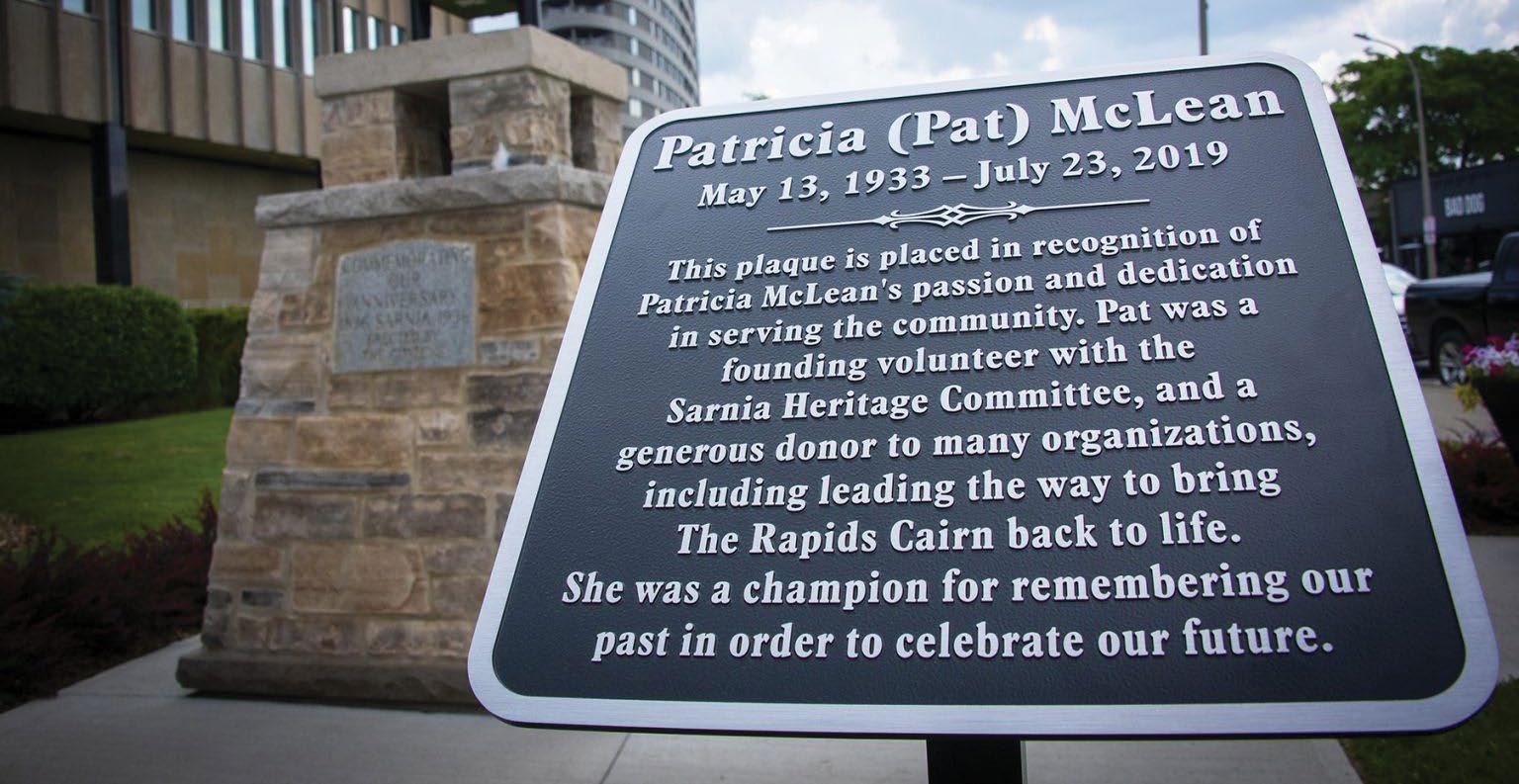

Recognizing a lifetime dedicated to volunteer work and the community’s heritage, in July of 2023 the City of Sarnia unveiled a plaque honouring Patricia McLean.
Family members; past and present Sarnia Heritage Committee members; and City Council representatives gathered at the Centennial Cairn and recently installed parkette on the southwest corner of the City Hall property, for a dedication ceremony and plaque unveiling.
The posthumous honour recognizes McLean’s lifelong service to the community, notably as a founding member of the Sarnia Heritage Committee. She served on the committee from 1987 to 2019, the year that she died.
Patricia McLean was born in Sarnia on May 13, 1933 and graduated from S.C.I.T.S. in 1951. In the 1970s she drove Sarnia’s tennis kids to tennis tournaments across the province. Pat was passionate about her city, and as a tireless volunteer throughout her life, she was recognized by Premier David Peterson in 1986 for her work with the Sarnia Housing Authority and was the United Way Volunteer of the Year in 1990. Her true love for the City of Sarnia was reflected in her work on the Sarnia Heritage Committee from 1987 to 2019. Pat was responsible for the restoration of the Boer War Memorial Fountain, and, at Lakeview Cemetery, she oversaw the restoration of the Alexander
Mackenzie monument by Parks Canada and produced both the Mackenzie brochure and their History Tour brochure.
She served on various boards, including the Arthritis Board, the YMCA Board, and the International Symphony Board. Her philanthropic work was an extension of her commitment to her community as a longstanding member in Delta Chi Sigma Sorority.
“This is truly fitting, to dedicate this site, especially the historic Centennial Cairn, to Pat. She was so dedicated to preserving this community’s heritage, so it is only fitting that this piece of our heritage stands in her honour,” said Mayor Mike Bradley, who recognized McLean as a Mayor’s Honour List recipient in 2014.
The Centennial Cairn at City Hall is a replica of an original that marked the City’s 100th anniversary in 1936, first constructed at what is now Veteran’s Park. The original was removed in the 1950s, and the replica was constructed at City Hall in 2004. At that time, it was McLean who paid for the custom-built replica thermometer that tops the Cairn today.
She also was responsible for the restoration of the Boer War Memorial Fountain and oversaw the restoration by Parks Canada of the Alexander Mackenzie monument at Lakeview Cemetery.
The Cairn was refurbished by the city in 2022, alongside the installation of a small landscaped parkette.
Each issue Foundation Magazine provides a mini-profile of five people whose work and commitment make Canada a more liveable country. We thank them for their service.

1
Diane Lacaille is the Scientific Director and Senior Scientist at Arthritis Research Canada; as well as a Professor, Department of Medicine, at the University of British Columbia, in Vancouver. She has a rheumatology practice in Vancouver, BC. She holds the Mary Pack Chair in Rheumatology Research from UBC and The Arthritis Society of Canada. She completed medical school and internal medicine training at McGill University in Montreal, and her Rheumatology training and a Master’s in Health Sciences, clinical epidemiology, at the University of British Columbia. Dr. Lacaille’s research has led to significant advances in preventing Work Disability for employed people with inflammatory arthritis, such as rheumatoid arthritis (RA). She has developed an online a program that helps people stay employed by promoting self management of problems at work and helping people make necessary changes at work. Dr. Lacaille is also evaluating the quality of health care services received by British Columbians with RA.
2
Tim Monds has been a pillar in the Lung Cancer Community with his efforts to raise awareness of the disease to as many people as possible. Tim has inaugurated Give a Breath 5k, and thanks to his commitment, energy, and leadership, the event has grown to become Canada’s premier walk/run in support of Lung Cancer. In the spring of 2016, Monds received a diagnosis of stage I lung cancer at the age of 57. The diagnosis came after 20 years of recurrent bronchial pneumonia accompanied by various lung issues. In April of 2016 after going to the hospital for chest pains, an X-ray detected a nodule. A subsequent CT scan confirmed lung cancer. Tim had never smoked in his life. In 2019, with the support of his surgeon, Tim and his family set out to organize a walk/run to raise funds and awareness about lung cancer. Give a Breath 5k’s inaugural event was in 2019. The Monds family has since partnered with Lung Cancer Canada and have seen incredible growth. Now in its fifth year, Give a Breath 5k is held in 4 cities across Canada, and has raised $350,000 to date.
3
Shayenne Selleck is the Manager, Employee Giving, for Alberta Investment Management Corporation (AIMCo) and Executive Director of the AIMCo Foundation for Financial Education. She describes herself as a data-driven communicator, creative storyteller and passionate community advocate and says she has one of the greatest jobs in the world: connecting people to the exact project or person making a difference in the area they care about most and telling the story of how a single gift can change everything. She has served the Alberta Children’s Hospital Foundation, the University of Calgary as Associate Director, Annual Giving, the Canadian Cancer Society for more just under three years and the University of Alberta, am other nonprofit and philanthropic organizations.
4
Jennifer Marley is Chair of the Board of the Leukemia & Lymphoma Society of Canada. A proven marketing leader and strategic advisor with 30 years of experience, Jennifer Marley solves the highest-level, toughest strategic challenges for her clients at the marketing advisory firm, Sklar Wilton & Associates (SW&A). In her 18 years at SW&A, Jennifer has been honoured to act as strategic and insights advisor to some of Canada’s finest companies to collaboratively solve tough business challenges to unlock growth and build stronger brands. Her vision has been a driving force behind many successful culture, engagement and coaching initiatives at SW&A leading the firm to be named as one of Canada’s Best Workplaces, as well as, an Employee Recommended Workplace in 2017 and 2018. The blood cancer cause is a personal one for Jennifer. She is a 14-year leukemia survivor and is dedicated volunteer for The Leukemia & Lymphoma Society of Canada. She is also a keen adventurer who enjoys new challenges including biking, hiking, trekking, and zip-lining in some of the most exotic and beautiful parts of the world. She is a mother of two, Matt 22 and Kate 20, who she is helping transition through university to adulthood. Her husband Murray enjoys accompanying her on her adventures.
5
Josée Lafitte is Director of the RONA Foundation. After having worked in the world of philanthropy for over 20 years, she says she is honored to be managing the RONA Foundation. When she looks back on all that the foundation has accomplished these past 25 years, she is inspired and wants to challenge themselves to help even more Canadians in the next 25 years so that the foundation can keep playing an active part in building stronger communities throughout the country. The RONA Foundation contributes to improving the quality of life of Canadians in need by revitalizing their living environments or making it easier to access housing. In particular, it aims to help victims of domestic violence and their children, low-income families, and people with disabilities or mental health issues.
SERIOUS ABOUT LEGACY GIVING?





Giving
Ecojustice


